
Past Pennycress Field Days
2024 | 2023 | 2022 | 2021 | 2019 | 2018 | 2017 | 2016 | 2015 | 2014 | 2013 | 2012 | 2011 | 2010
15th Annual Pennycress Field Day
May 23, 2024 Field Tour
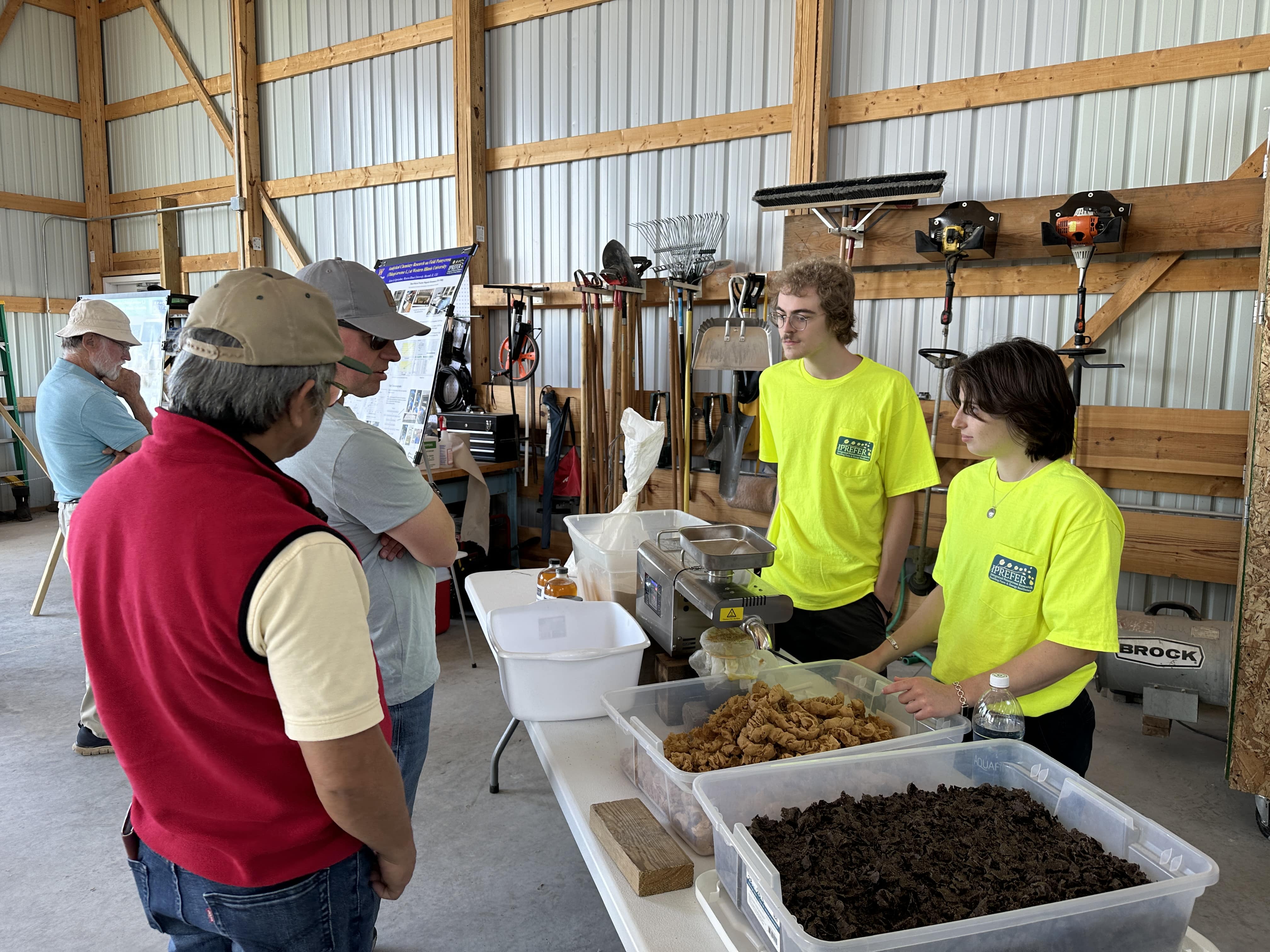
IPREFER interns (William Gregory and Dara Mandell) explain oil extraction from pennycress seed to produce jet fuel and seed meal for livestock.
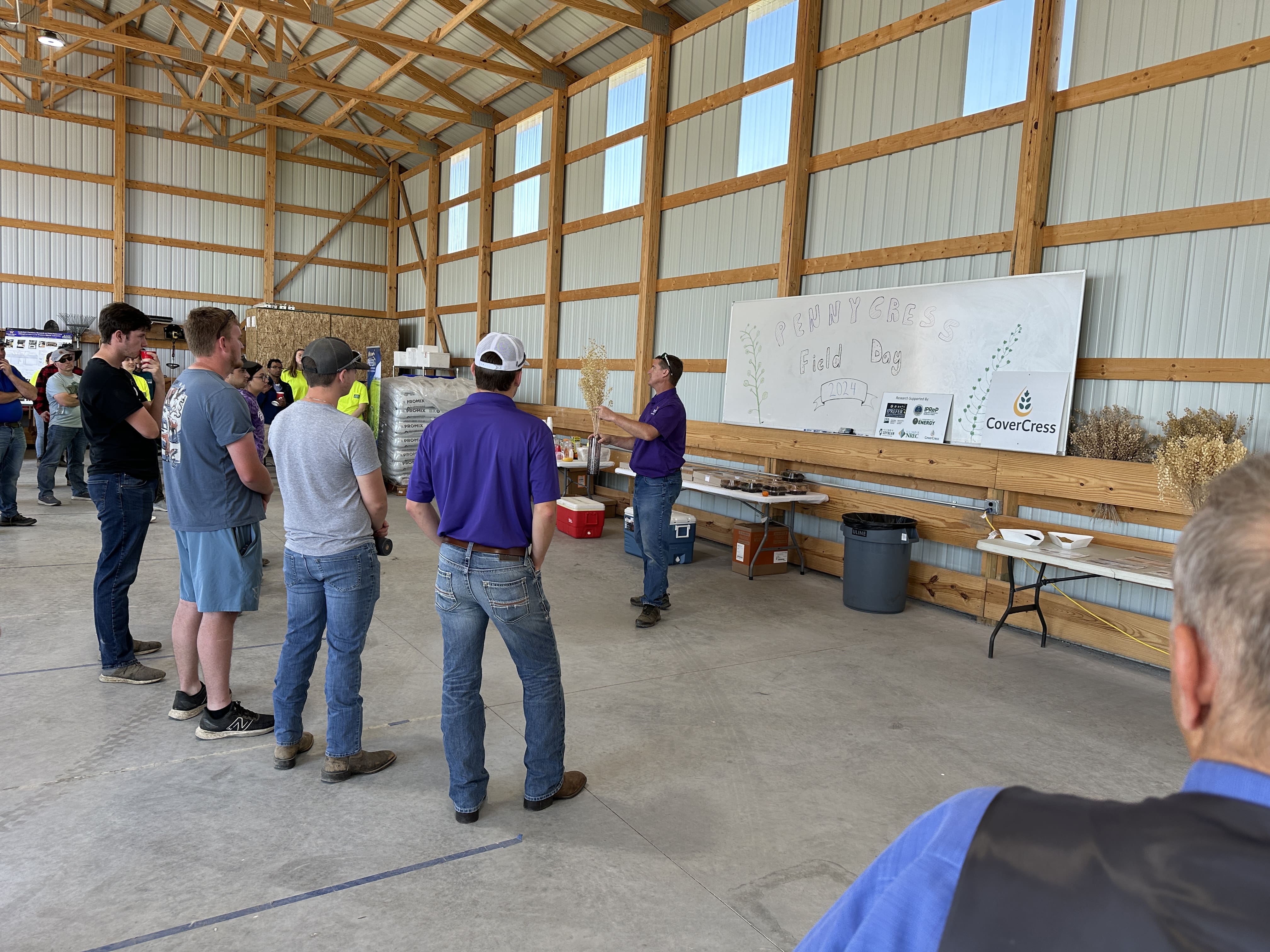
Dr. Win Phippen introducing pennycress and the differences between black and golden seeded varieties.
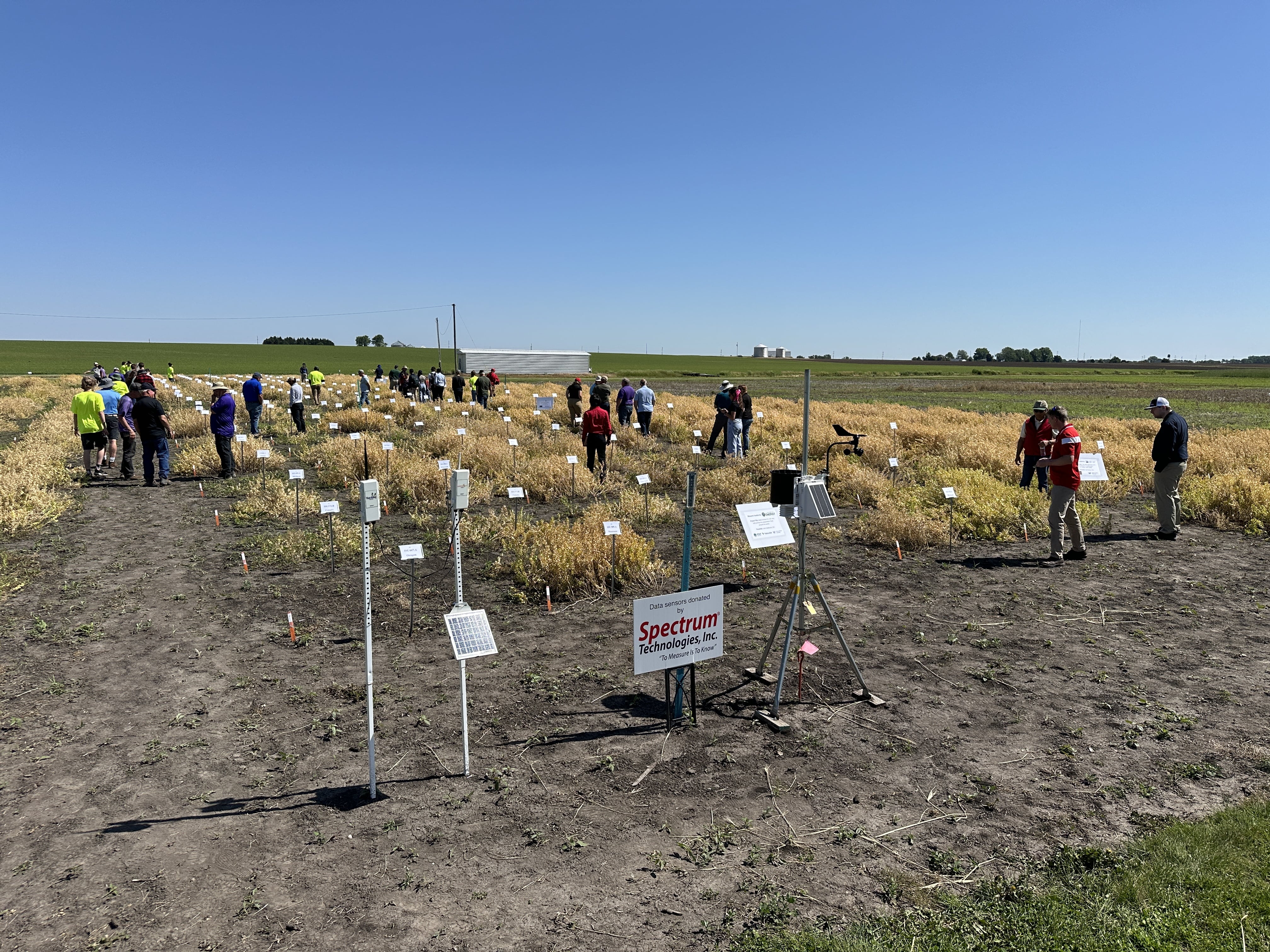
Participants exploring pennycress plots of varieties collected from around the world.
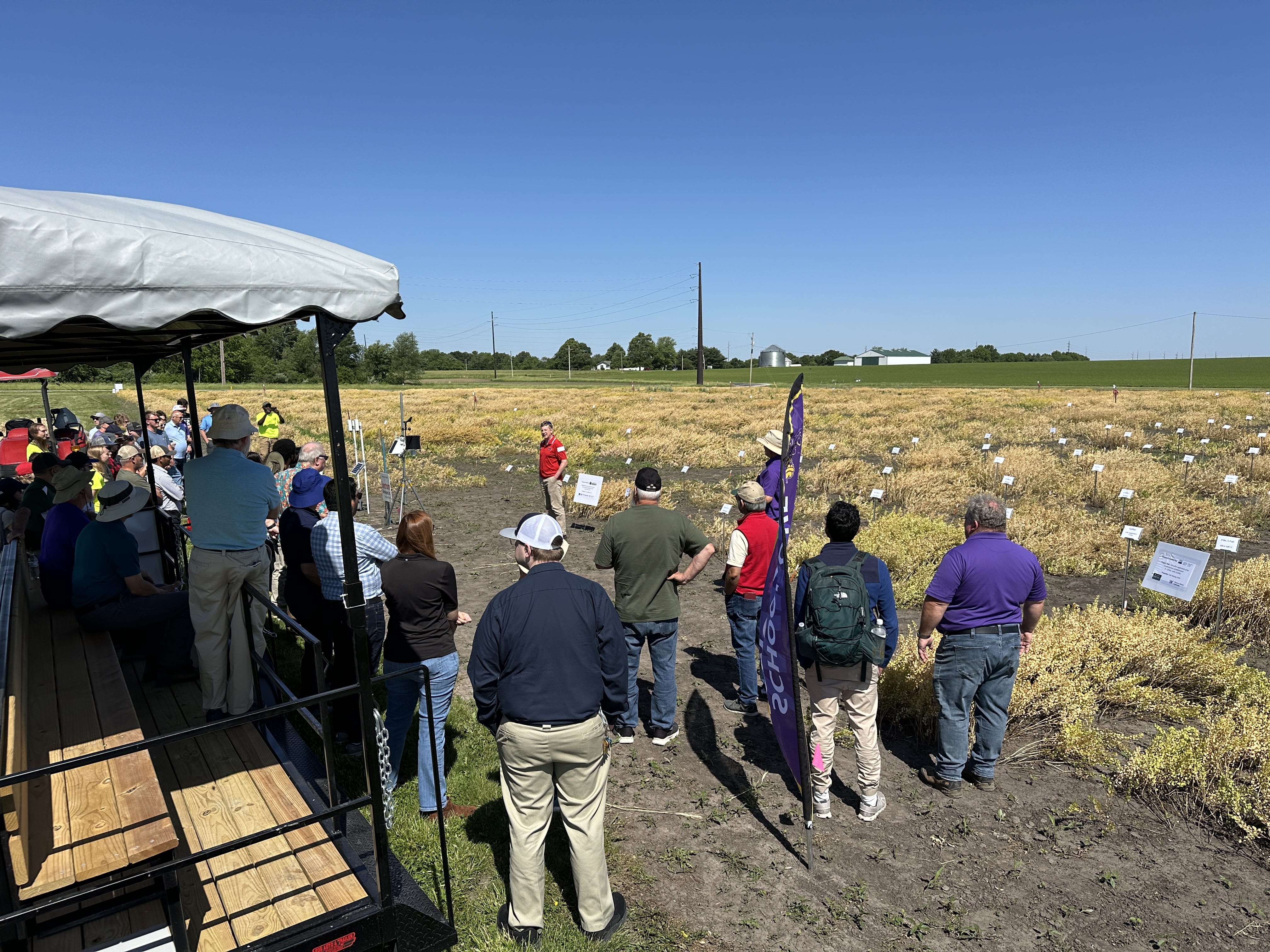
Dr. John Sedbrook (red shirt) from ISU introducing DOE-IPReP project studying the impact of abiotic stresses on pennycress.
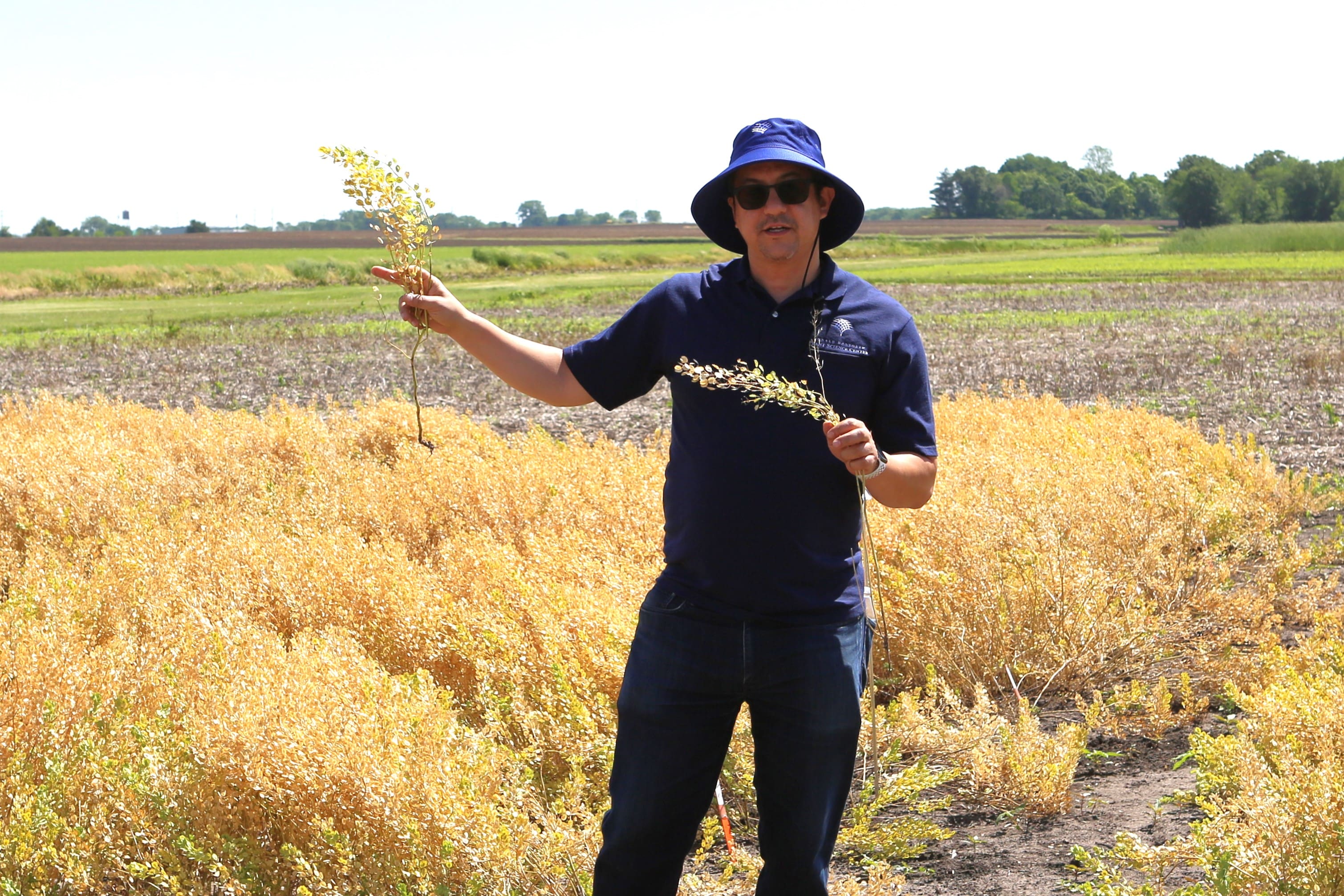
Dmitri Nusinow from the Donald Danforth Plant Science Center discussing the impact of planting density on plant architecture.
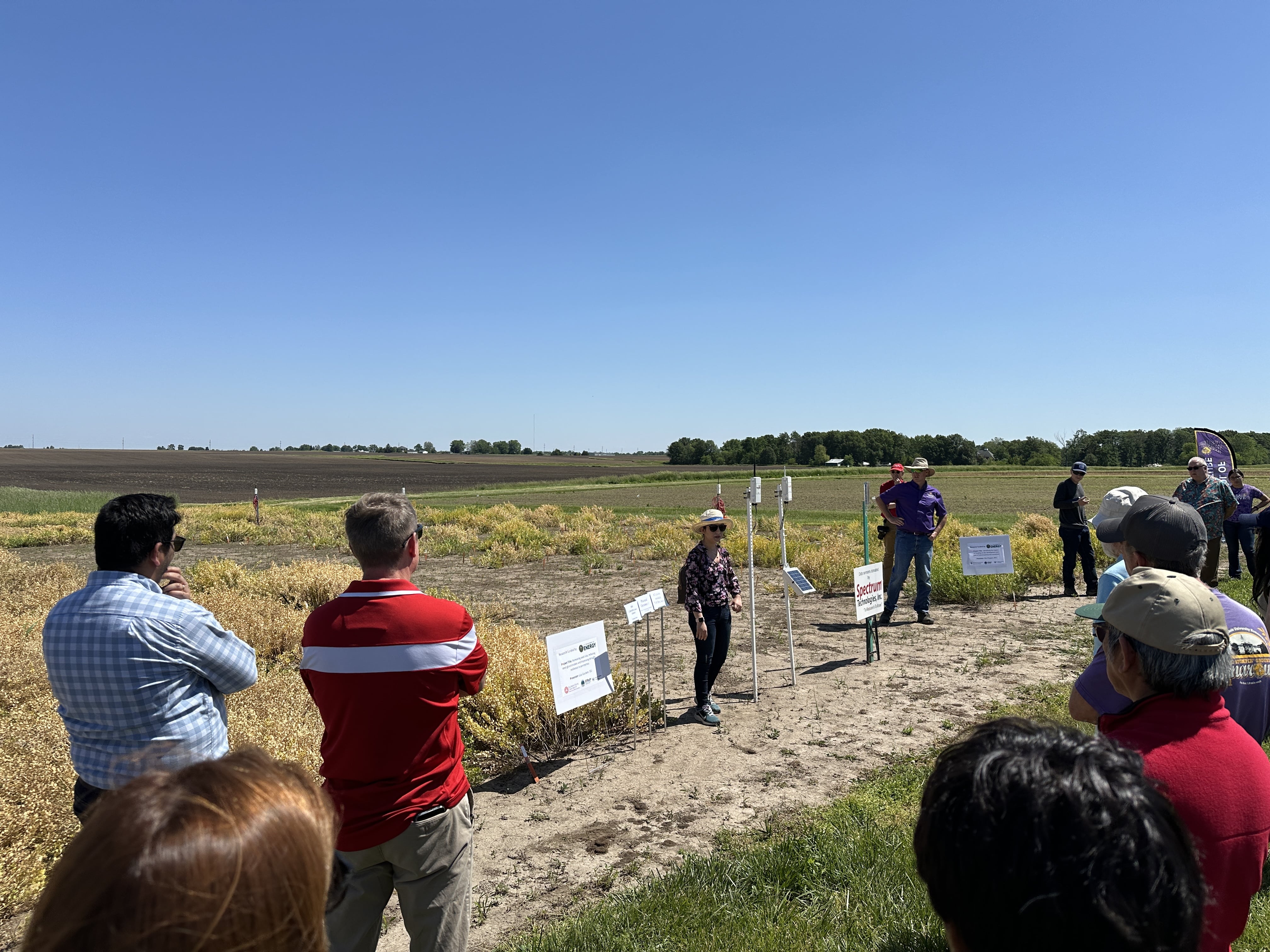
Graduate student, Liza Gautam, explain her research on gene-editing new traits into pennycress to increase oil and seed size.
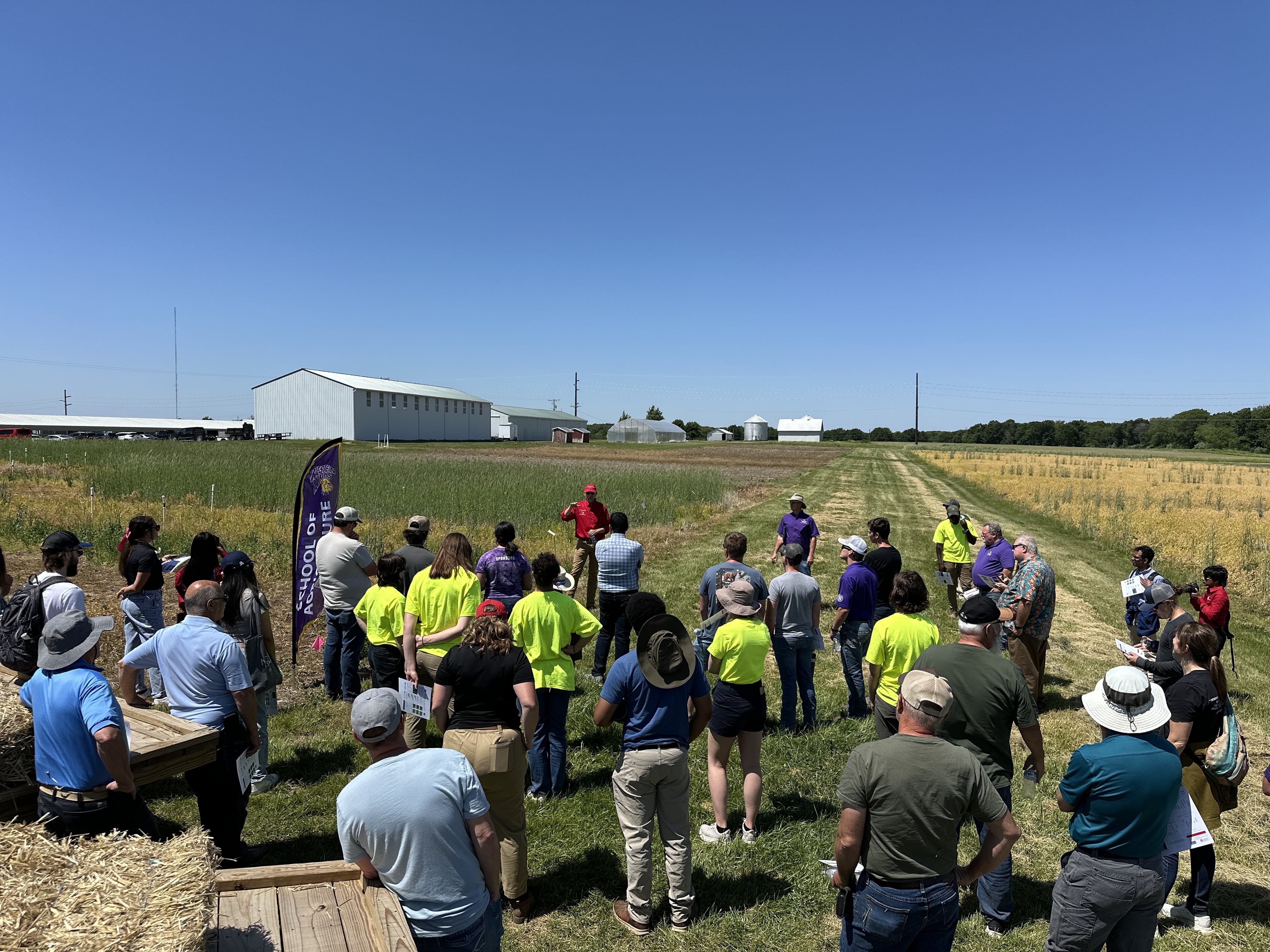
Dr. Rob Rhykerd (ISU, red shirt center) explaining crop rotation studies with cover crops and their impact on soil carbon and water quality.
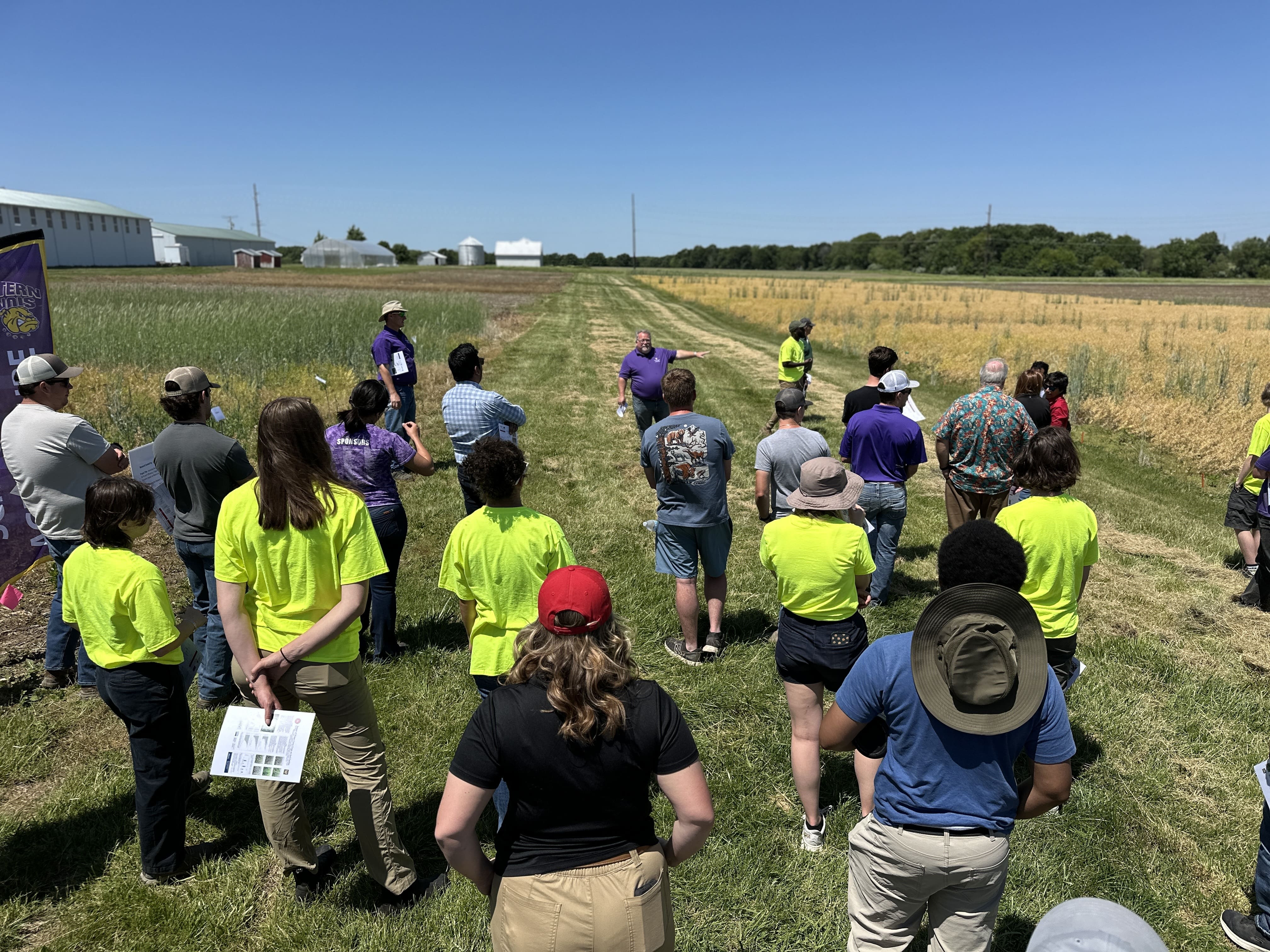
Tad Wesley (Purple shirt, center) explaining Illinois Soybean Association research on Soybean maturity groups after pennycress production.
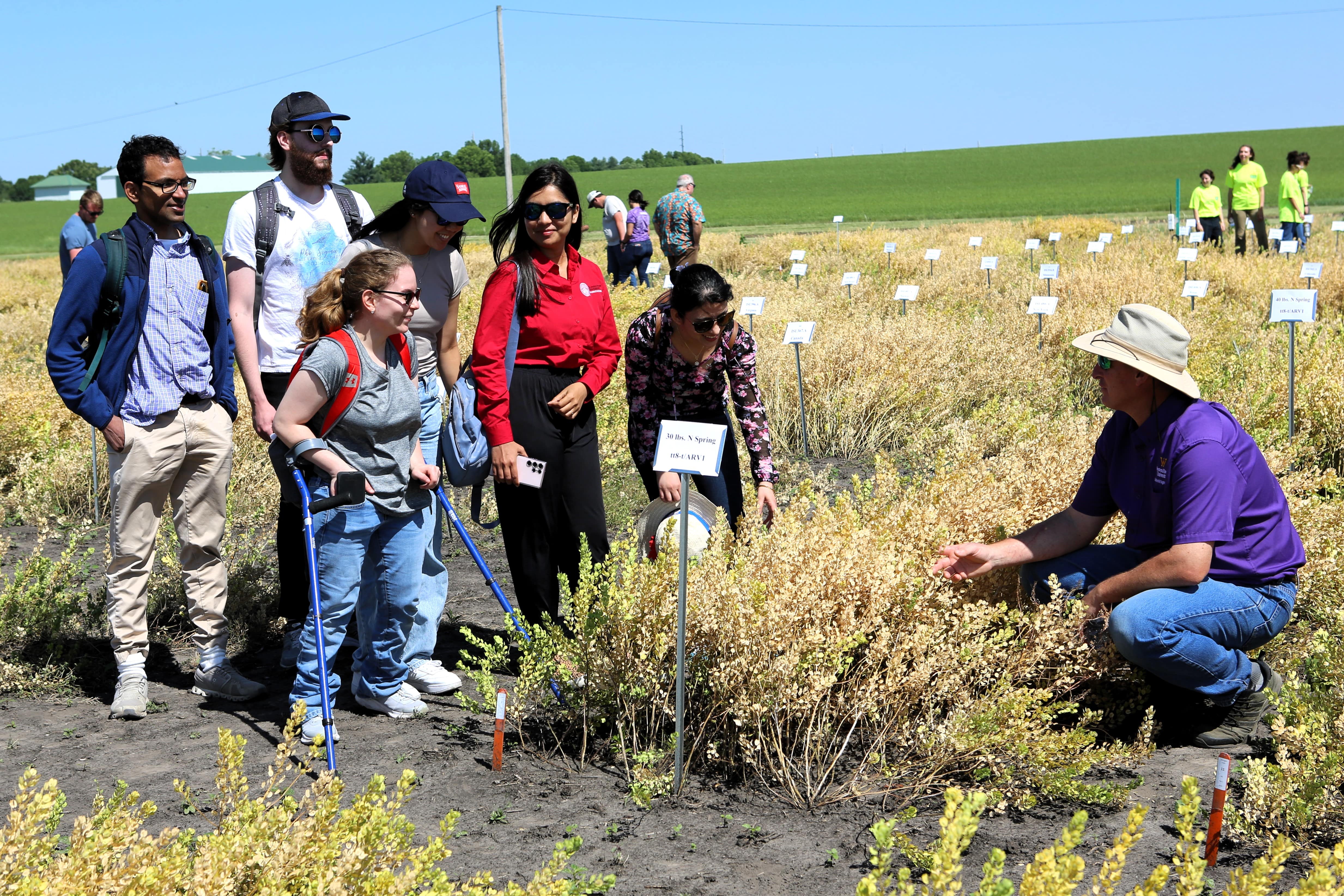
Dr. Phippen discussing wild pennycress collections with ISU graduate students.
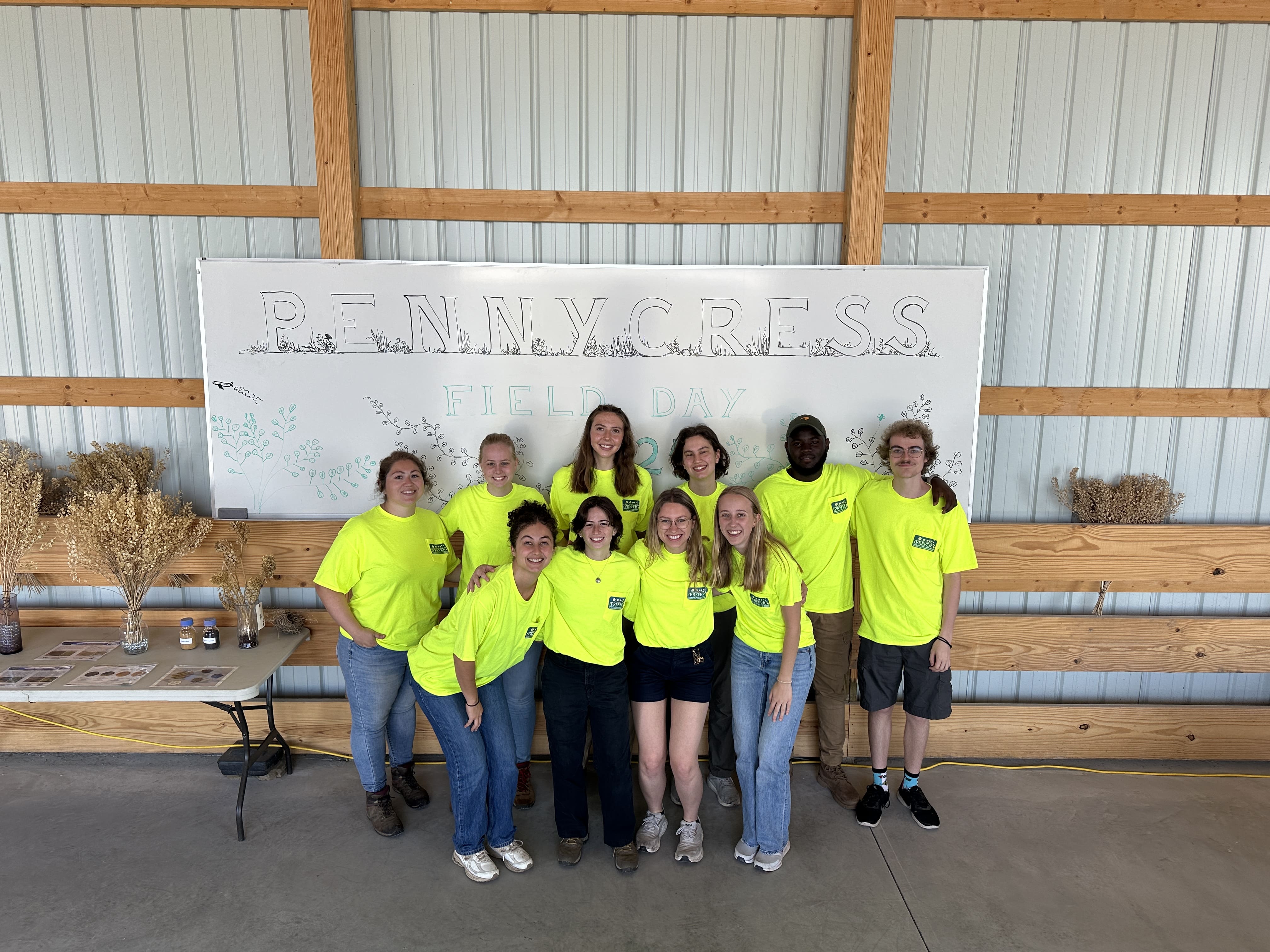
IPREFER summer interns for 2024 , back row (Andrea Padilla, Abigail de Jong, Adalee Lynch, Mila Kocic, Jnnea Nobal, William Gregory: Front row (Ellie Sheik, Dara Mitchell, Gabi Kwiecien, Rachel Weber)
14th Annual Pennycress Field Day
May 25, 2023 Field Tour
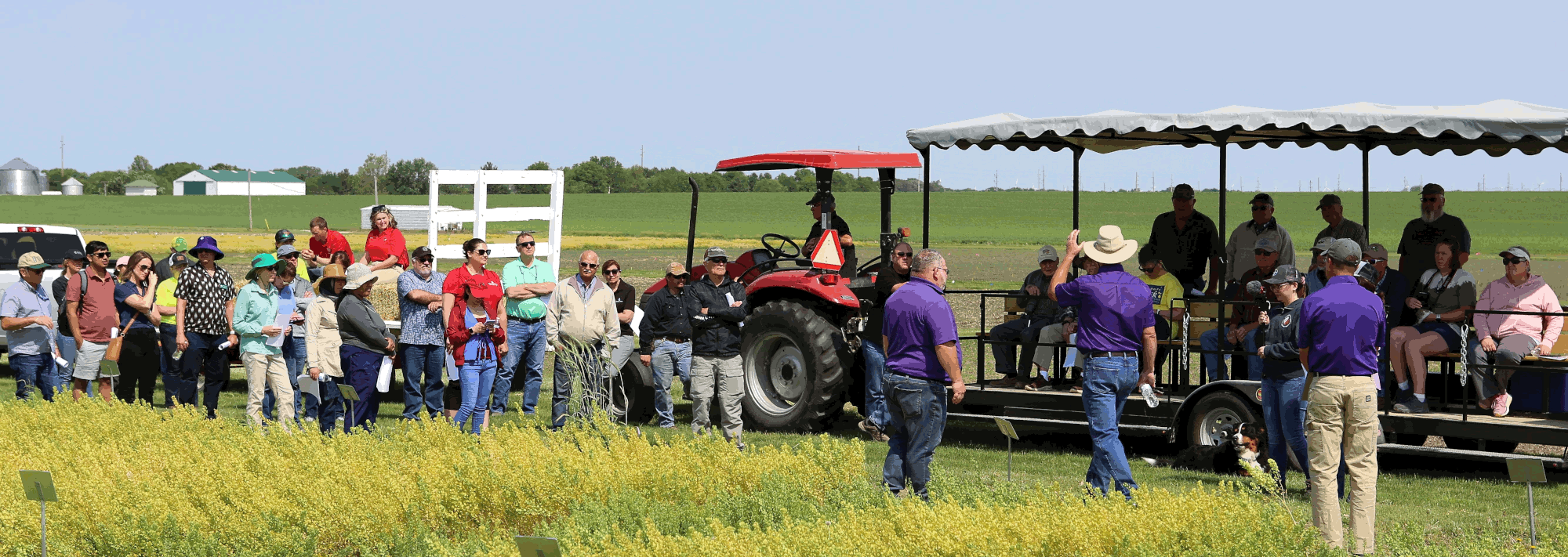
Another beautiful day for a field day. This year’s tour was well attended by producers, industry, and University researchers and students. Folks attended from Illinois, Iowa, Indiana, Wisconsin, Ohio, and Missouri.
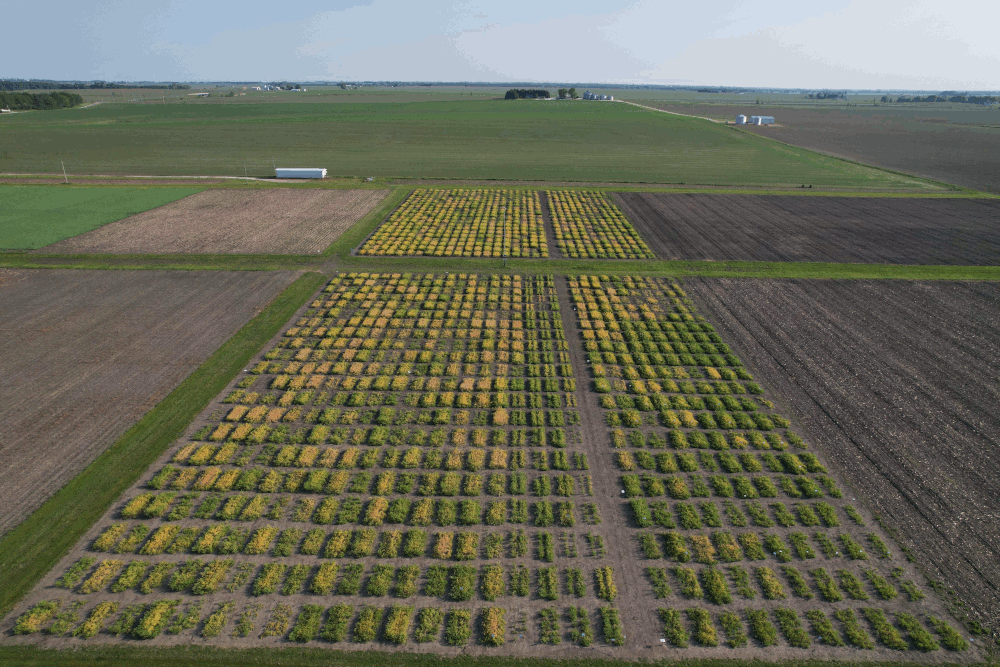
Aerial overview of the 2023 Pennycress research plots on May 23. Plots are starting to mature and will be ready for harvest by May 30.

Pennycress display and acknowledgments of sponsors.
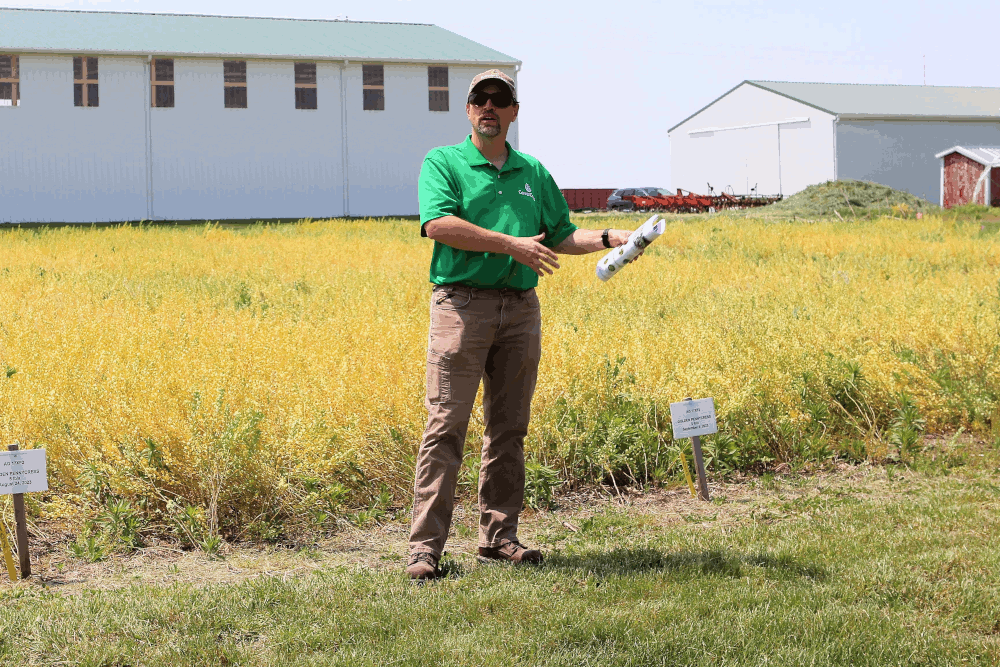
Chris Aulbauch (Lead Agronomist, CoverCress, Inc) explains commercialization efforts with new CoverCress crop converted from wild pennycress.
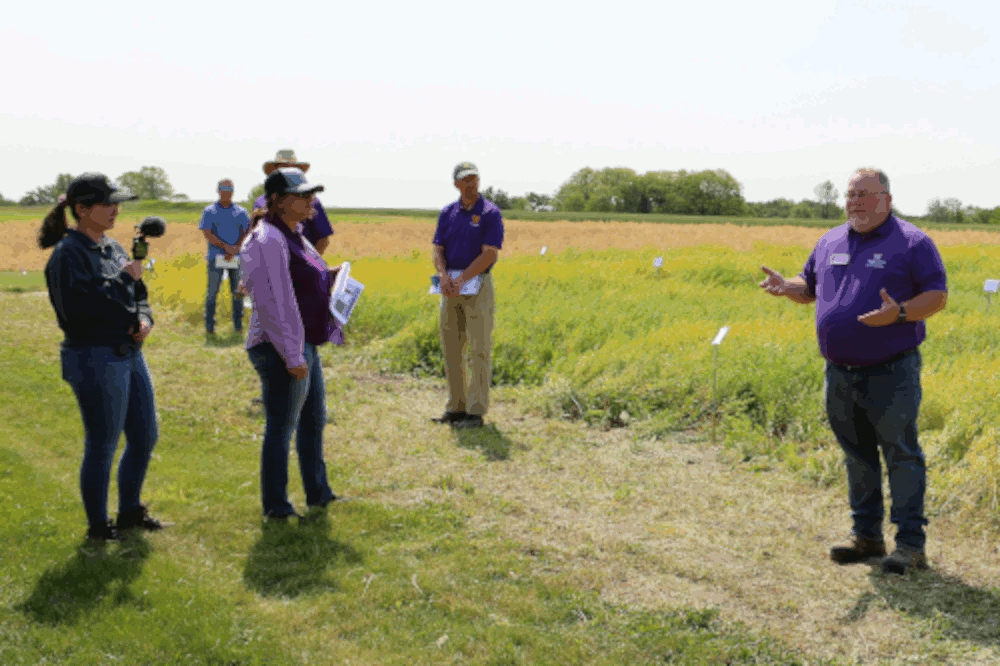
Tad Wesley (WIU Research Agronomist) explains seed burial study looking at pennycress seed persistance in the soil. Golden pennycress has been shown to decay quickly in the summer while wild type pennycress can persist for years.

Rob Rhykerd and Nicholas Heller from Illinois State University explains NREC project focused on carbon sequestration and covercrop rotations with pennycress.

Attendees enjoying a walk through the pennycress plots looking for variability between the wild populations of pennycress.
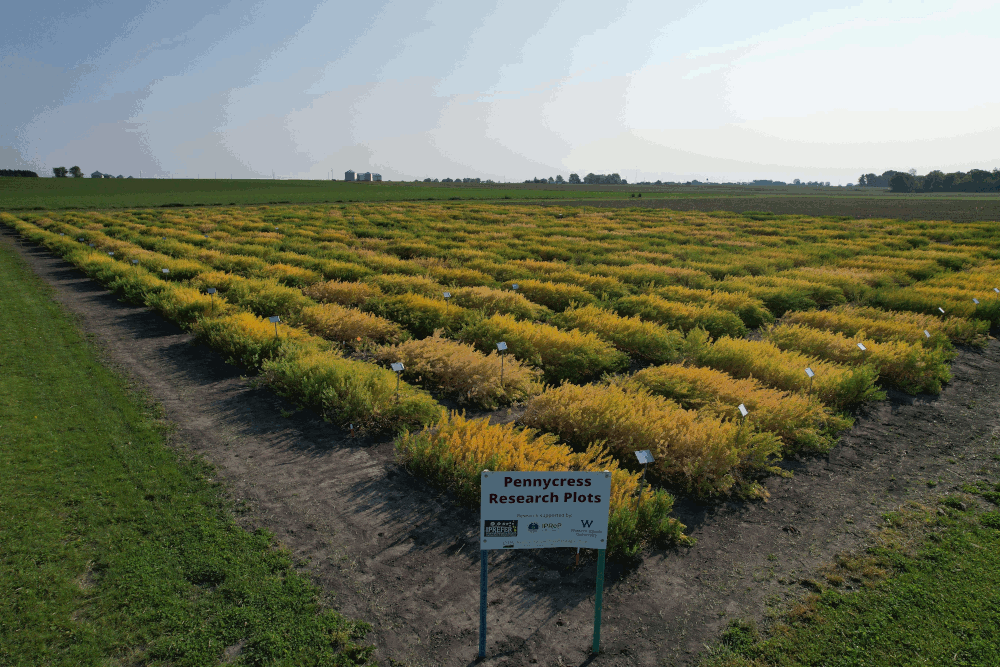
A total of 436 wild populations of pennycress collected from around the world were grown at the WIU research farm.

Dr. Phippen explaining differences in pennycress seed coat colors and nomeclature for different seed varieties.

Dr. Phippen explains fall aplllied nitrogen and sulfur experiments.

Dr. Mark Bernards explaining impact of corn and soybean herbicides on establsihing pennycress in the fall.
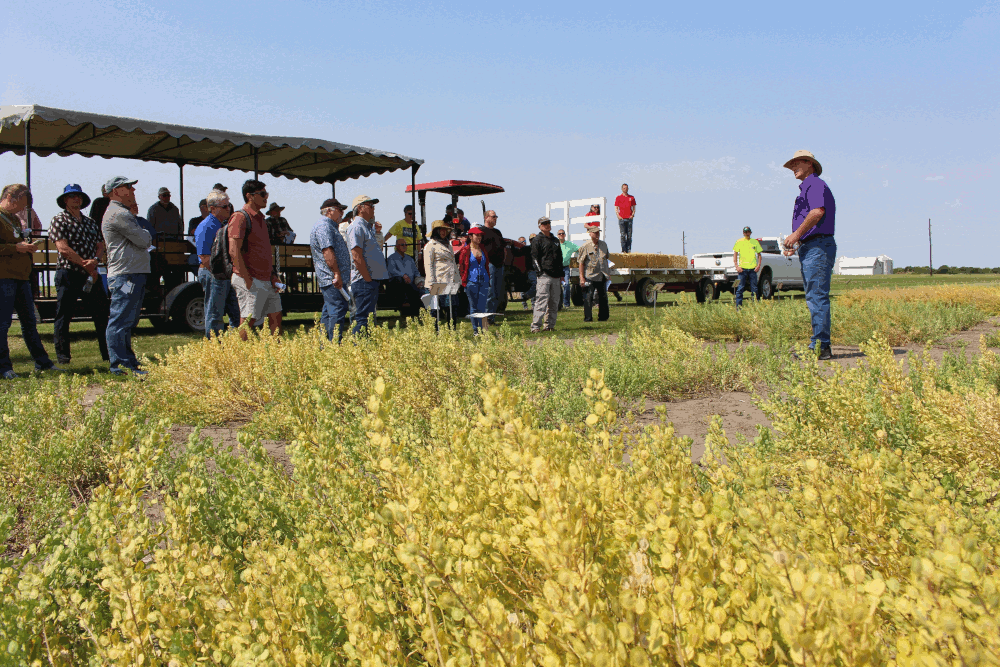
Attendees hearing about pennycress traits important to pennycress domestication.

Attendees examining the variability in maturity dates of wild pennycress populations.
13th Annual Pennycress Field Day
or 3rd Annual IPREFER Pennycress Field Day
May 26, 2022 Field Tour
Despite a little rainy weather, this year’s tour was well attended by producers, industry, and University researchers and students.
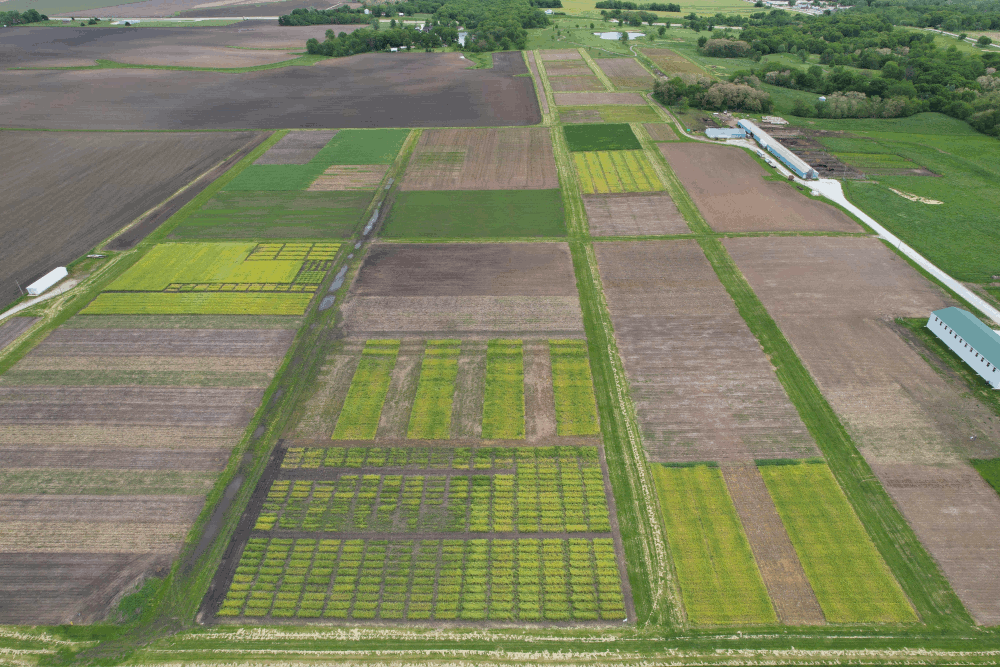
Aerial overview of the 2022 Pennycress research plots on May 22
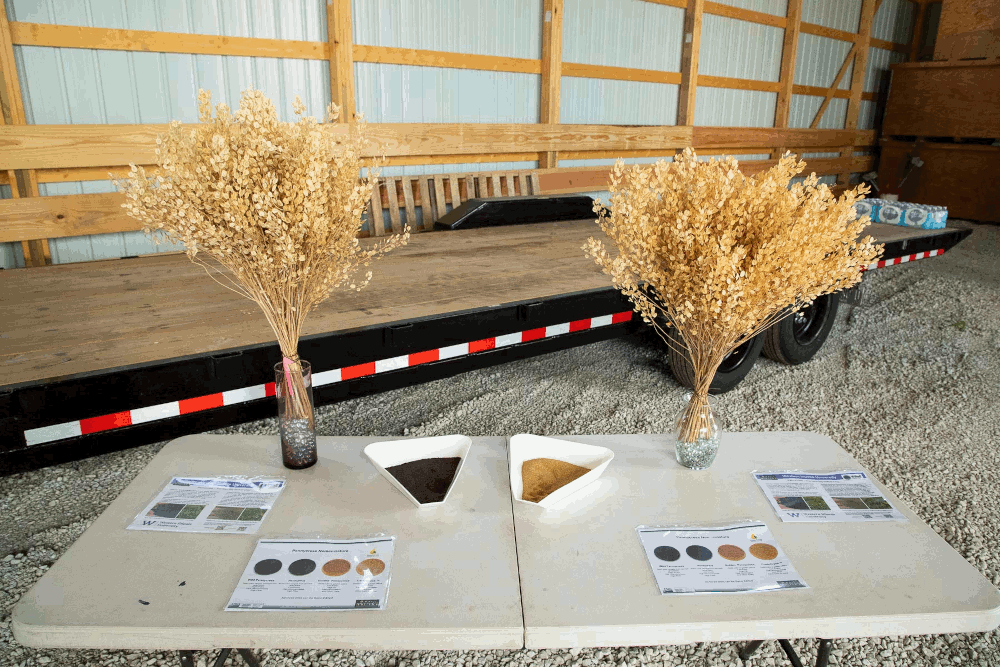
Contrast of wild black seeded pennycress to golden pennycress/CoverCress
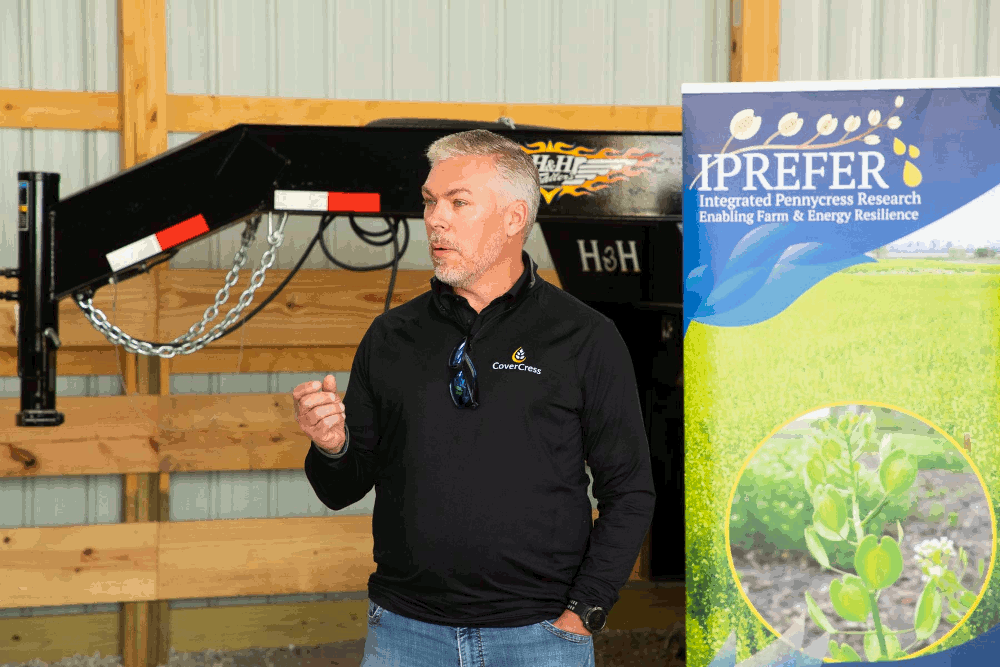
Michael DeCamp (CEO, CoverCress, Inc) explains commcerialization efforts with new CoverCress crop converted from wild pennycress
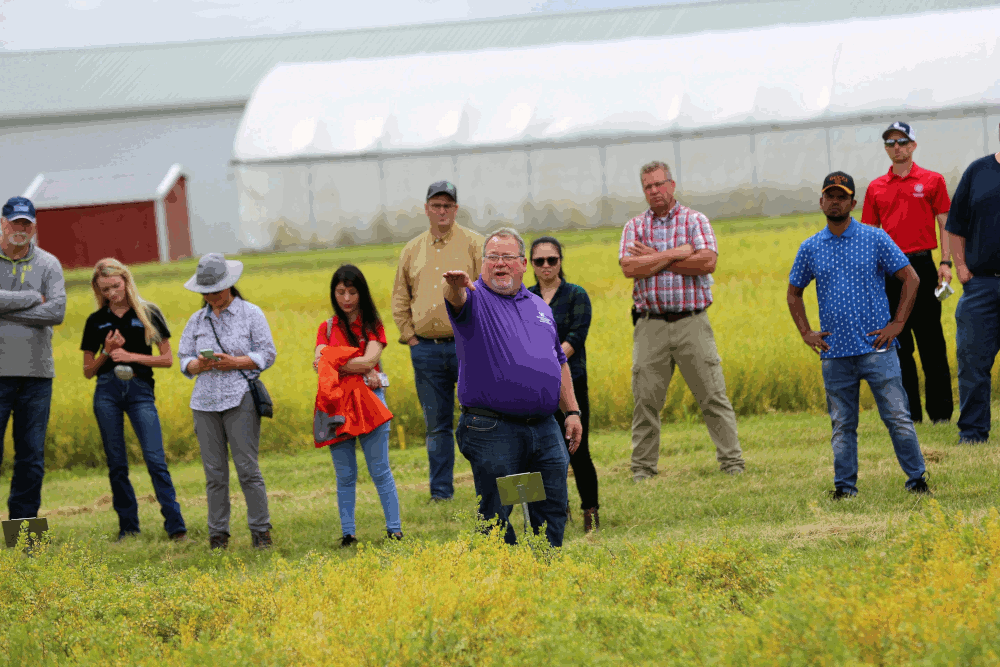
Tad Wesley (WIU Research Agronomist) dicusses research plots on GA seed treramtnets and timing of application of nitrogen to pennycress
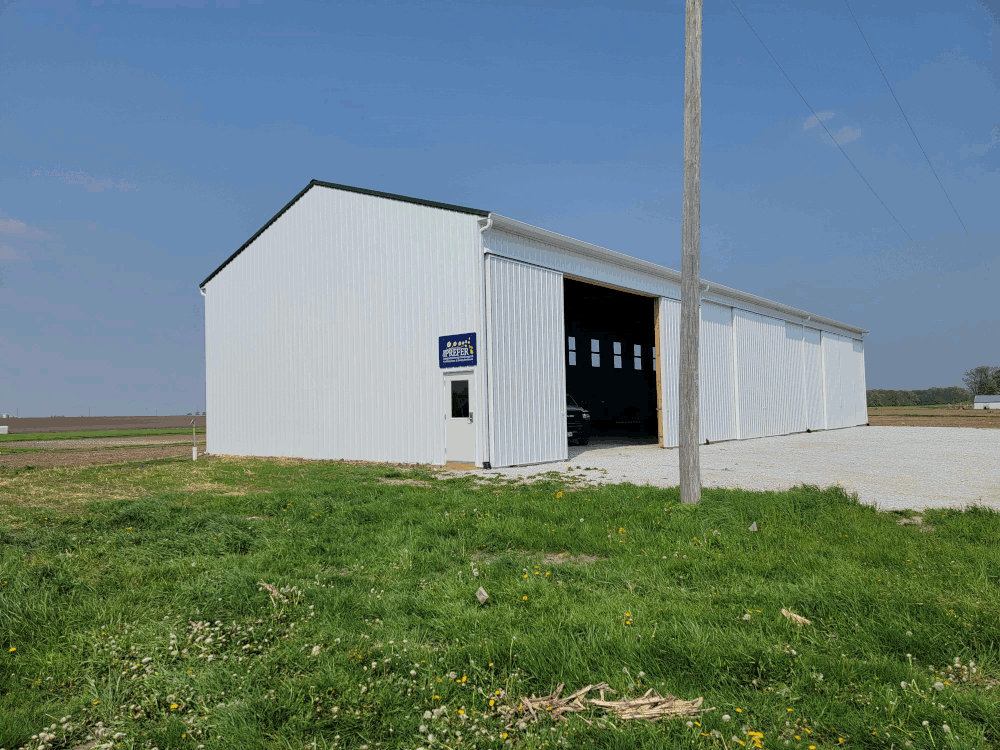
Dedication of new IPREFER research agronomy building
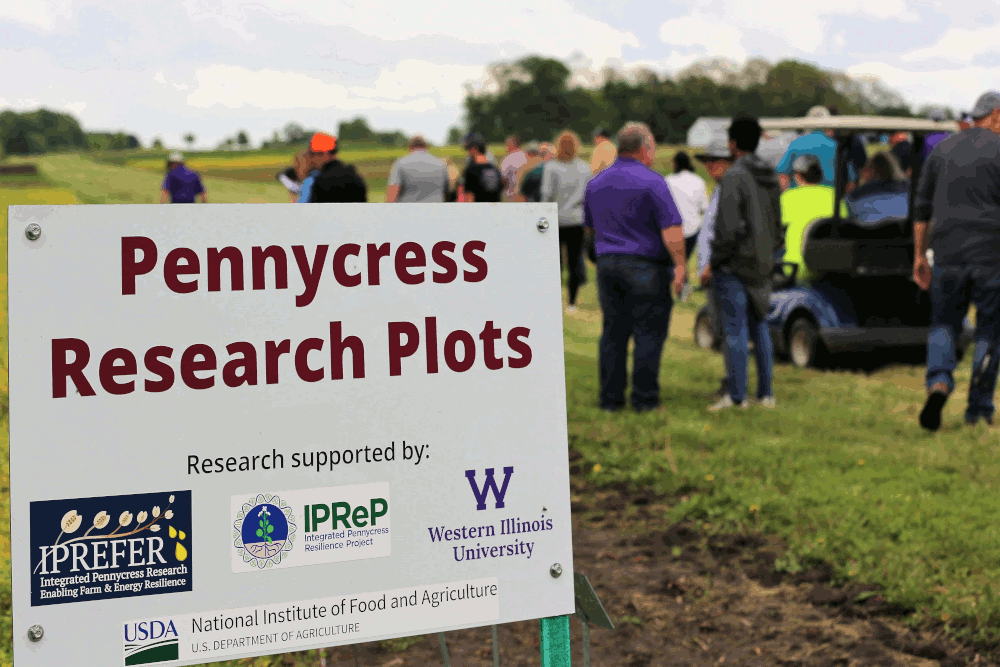
Research supported by USDA NIFA and USDA DOE projects

Dr. Phippen explaining differences in pennycress seed coat colors and nomeclature for different seed varieties
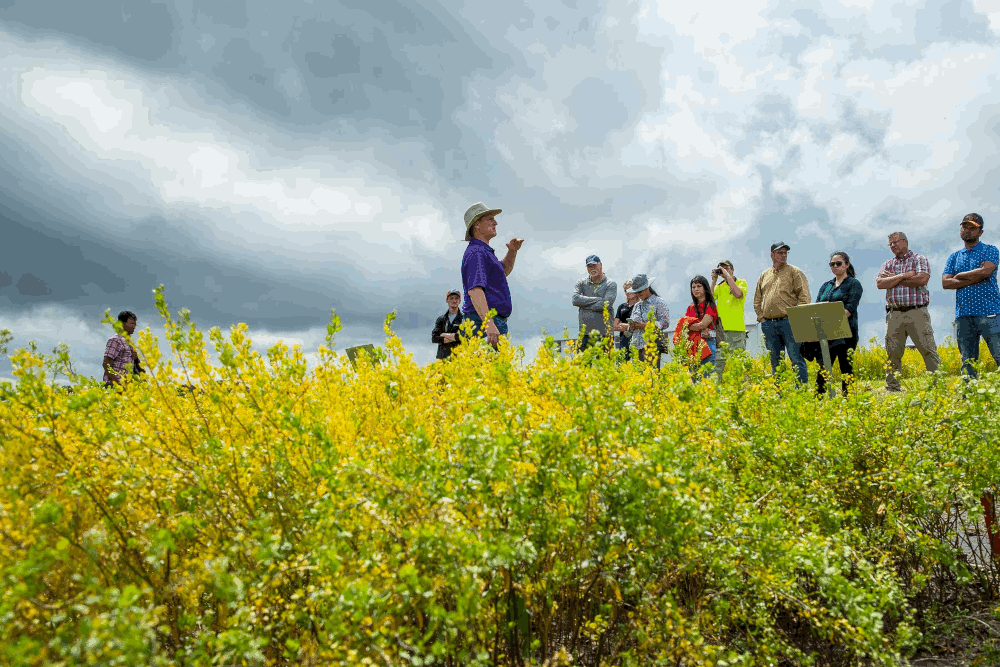
Dr. Phippen explains variety performance, nitrogen experiments, and state trials

Dr. Mark Bernards explaining impact of corn herbicides on establsihing pennycress in the fall

Attendees enjoying a walk through the pennycress plots before the rain/hail storm
12th Annual Pennycress Field Day
May 20, 2021 Field Tour
Despite COVID-19 restrictions, the 2021 field day went well. This year’s tour was attended by producers, industry, USDA and University researchers and students.
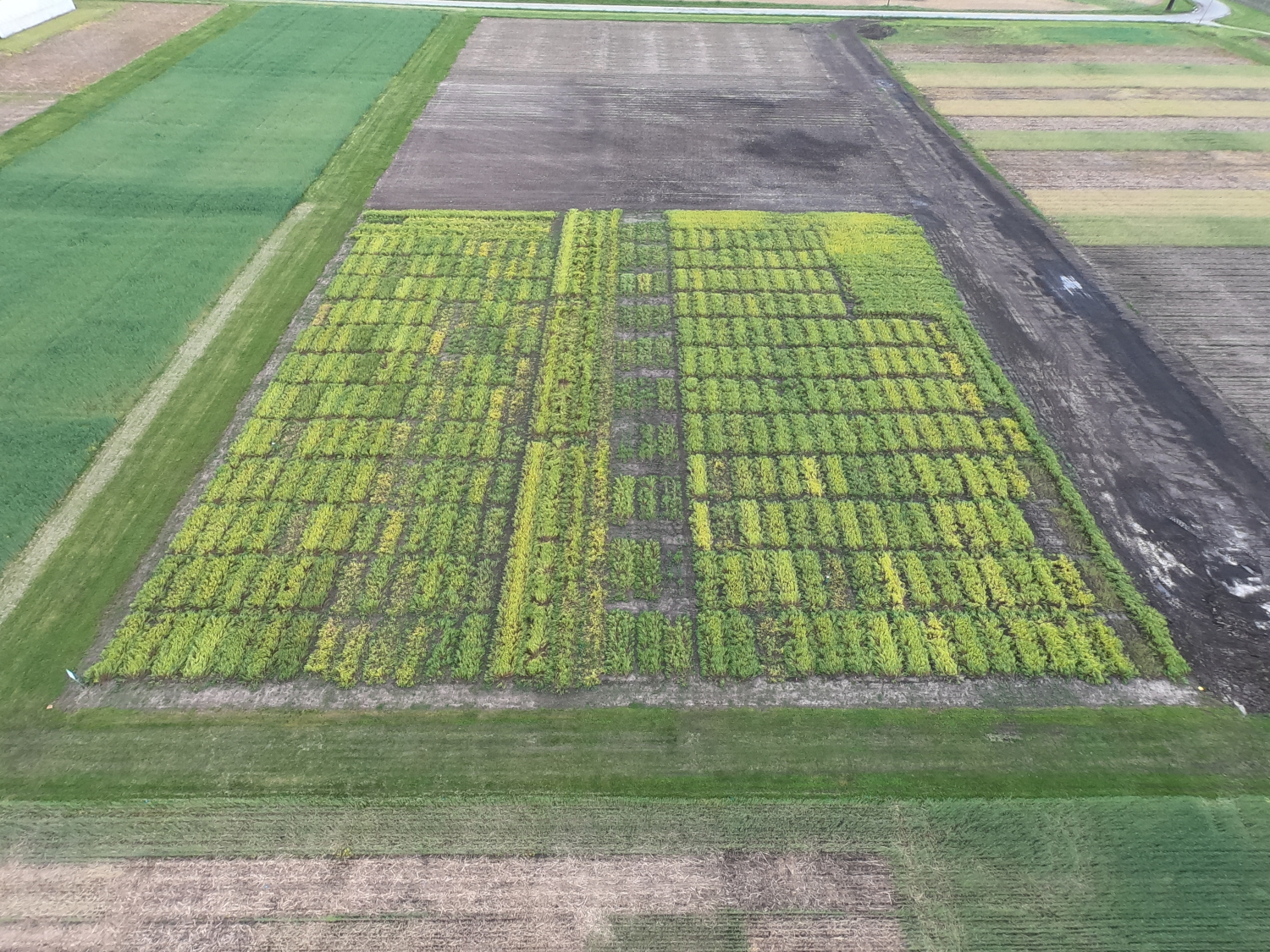
Aerial overview of the 2021 Pennycress research plots on May 18
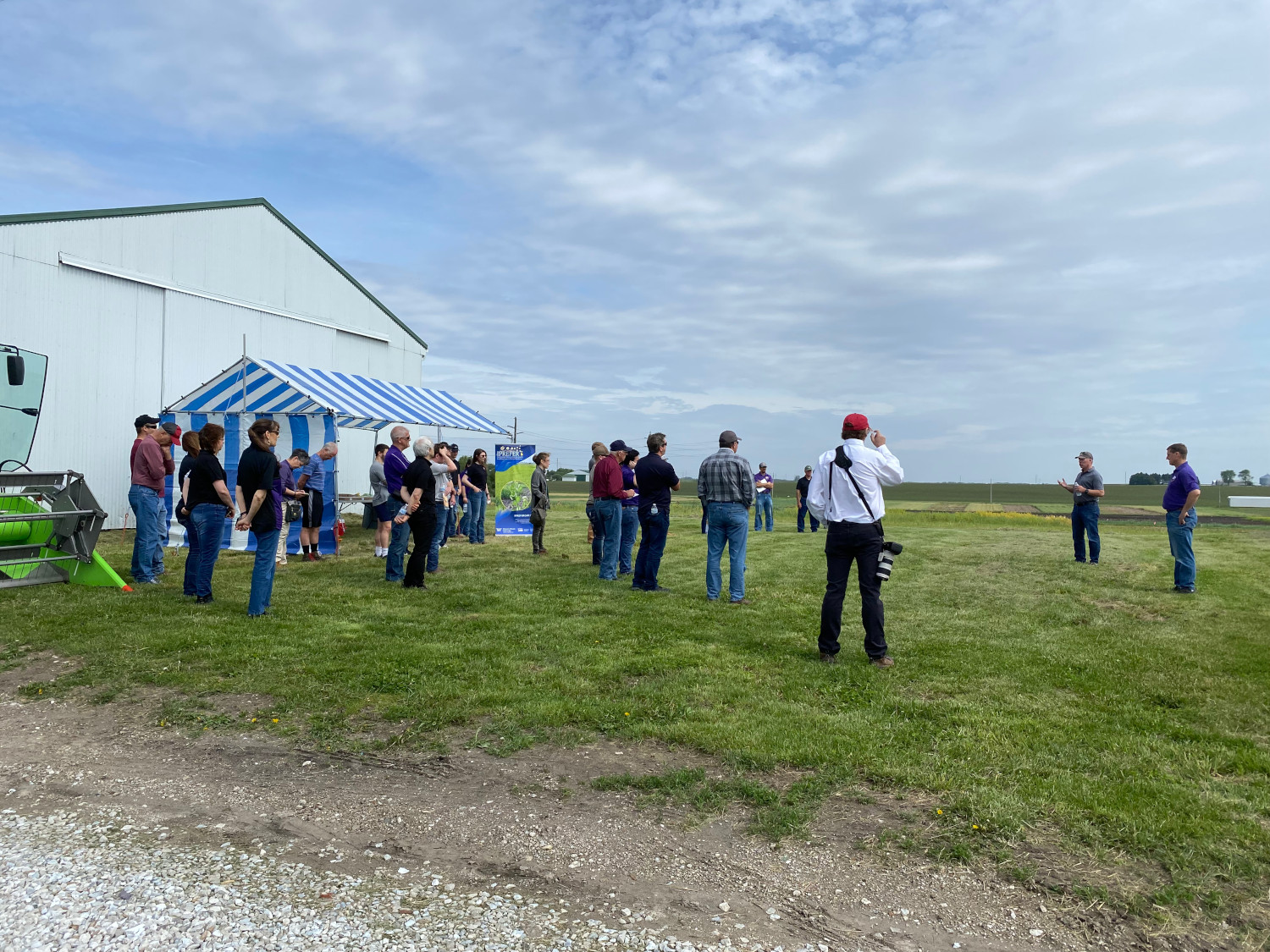
Michael DeCamp (CEO, CoverCress, Inc) explains commcerialization efforts with pennycress

Dr. Phippen dicusses features of new plot combine (Winterstieger Quantum)

Field plots in full bloom early April
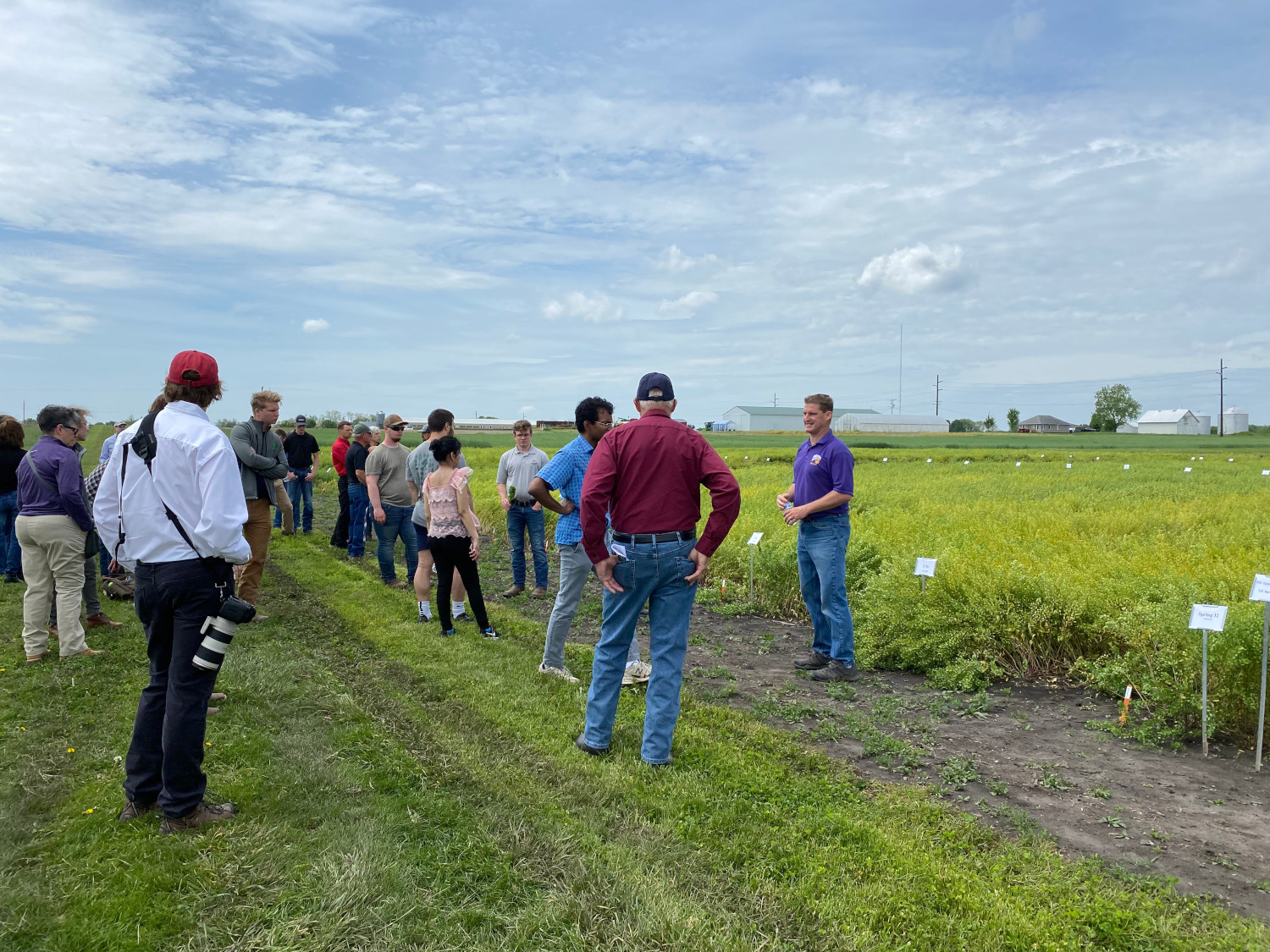
Dr. Phippen explains variety performnce, nitroggen experiments, and state trials
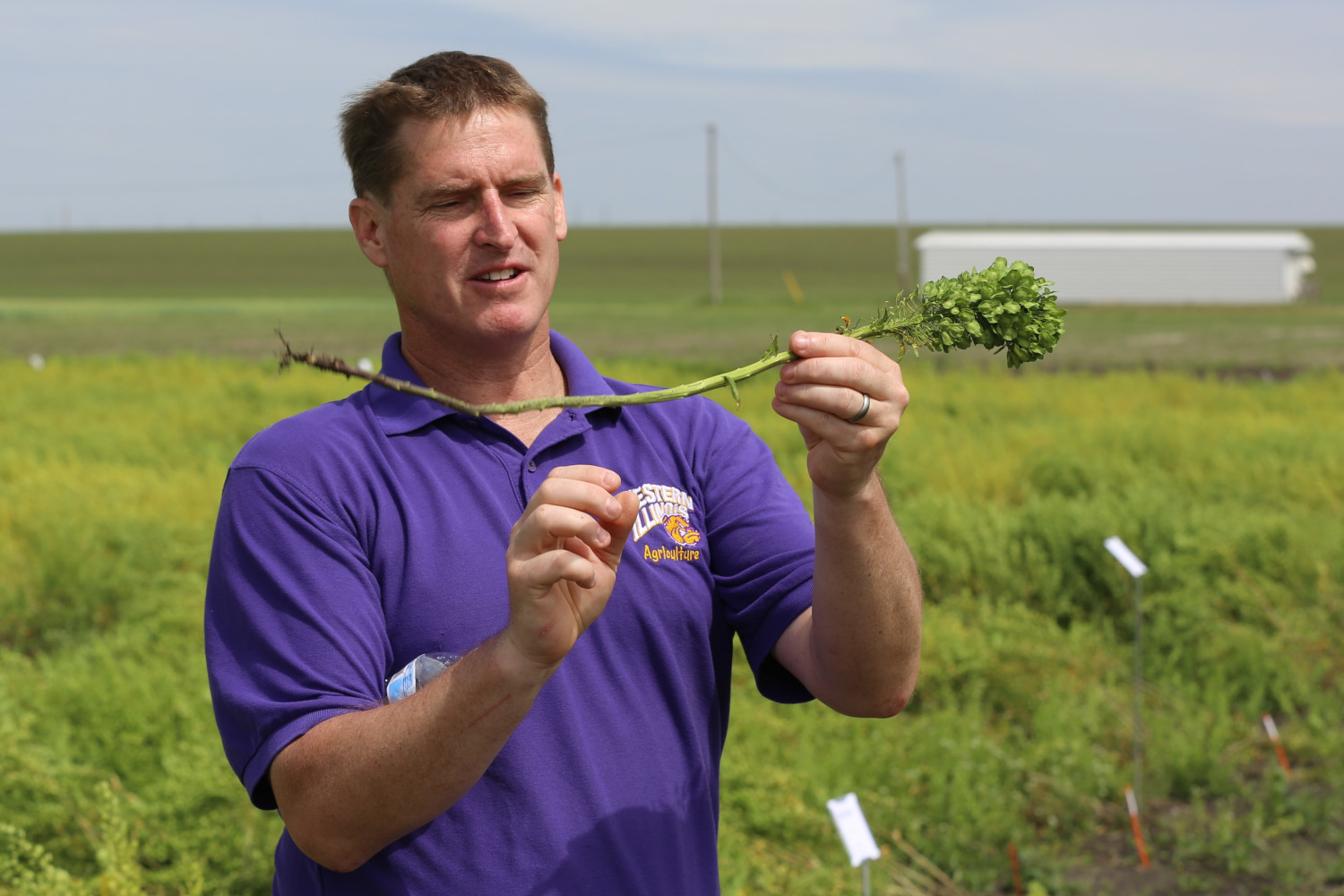
Dr. Phippen shows mutant line 'Snowball' with condensed floral stem.
Photo credit: Sarah Ritter, WIU
10th Annual Pennycress Field Day
May 23, 2019 Field Tour
The 2019 growing season started cold with 6 inches of snow of April 15th and continuous rain ever since. The wet cold conditions will delay harvest to the first or second week of June. This year’s tour was attended by producers, industry, USDA and University researchers from ISU and UW, and students.

Aerial overview of the 2019 Pennycress research plots

Dr. Phippen gives a brief overview of results from past pennycress research projects on variety trails and fungicide treatments.
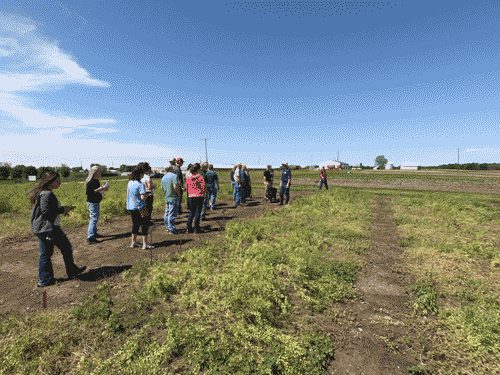
Dr. Phippen dicusses differences in plant varieties

Overhead shot of plots
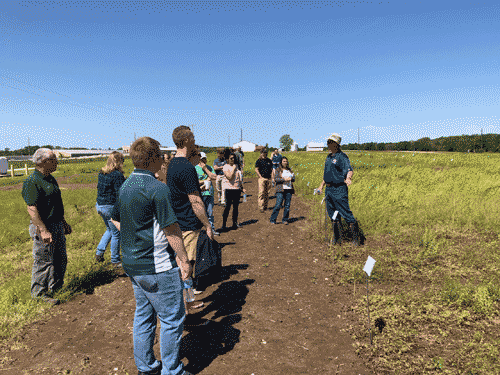
Dr. Phippen explains variety performnce and lodging.
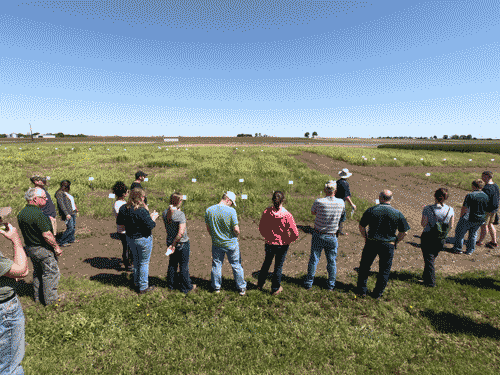
Dr. Phippen variety strip and fungicide trails.
9th Annual Pennycress Field Day
May 24, 2018 Field Tour
The plots were looking good despite the rough start. The 2018 growing season started with a record cold April followed by record warm May. Both the winter and spring type pennycress lines are starting the dry down phase of maturity. Everything should be harvested by the first week of June. This year’s tour was well attended by producers, industry, USDA and University researchers, and students.
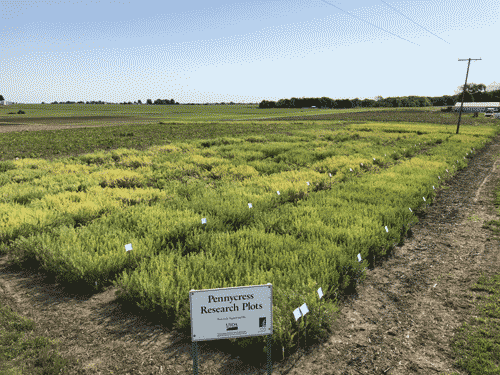
Pennycress research plots
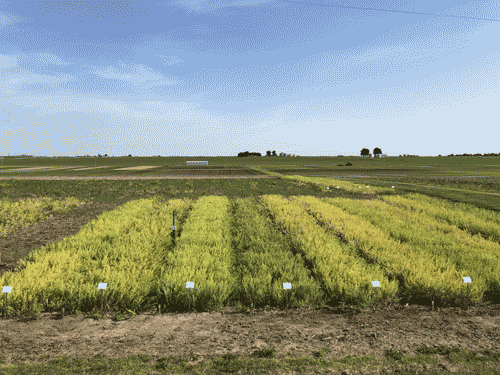
Bulk seed increases of winter pennycress lines

Dr. Phippen gives a brief overview of results from past pennycress research projects on variety trails and fungicide treatments.
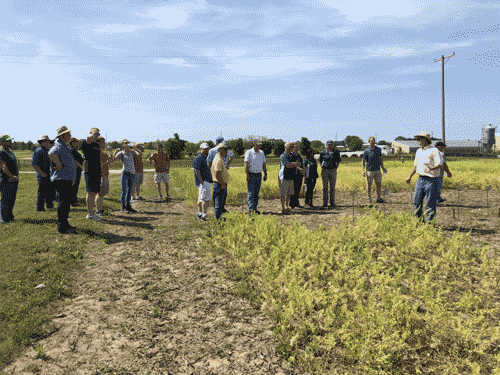
Dr. Phippen dicusses palnting dates effects on the winter type 'Elizabeth' line
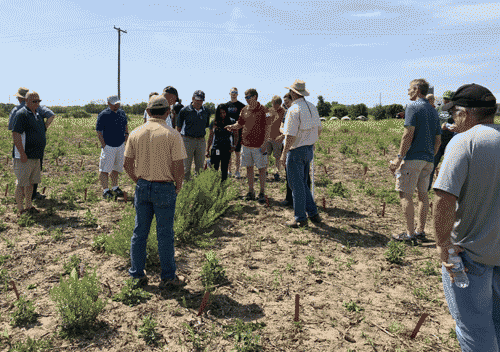
Dr. John Sedbrook explains EMS mutant screening program
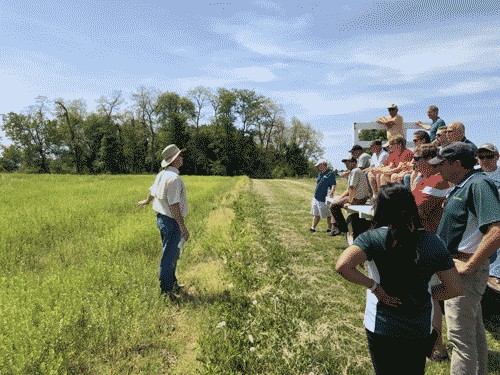
Large bulk stand of pennycress in no-till field
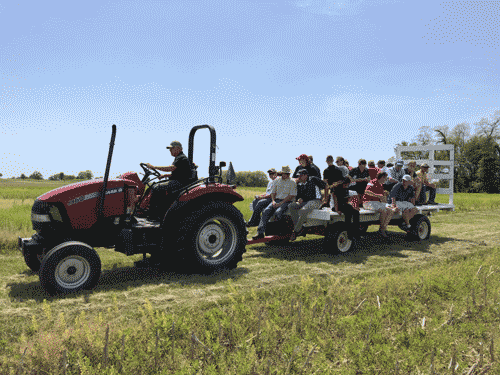
Attendees enjoying tractor ride to research plots.

Rough start to April 3, 2018 (6 inches of snow at 12F)
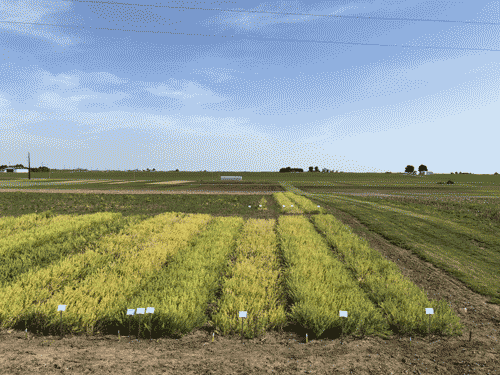
Bulk seed increases of spring pennycress lines

Dr. Phippen explains reduced plant height in variety trials and impact of early flowering selections.
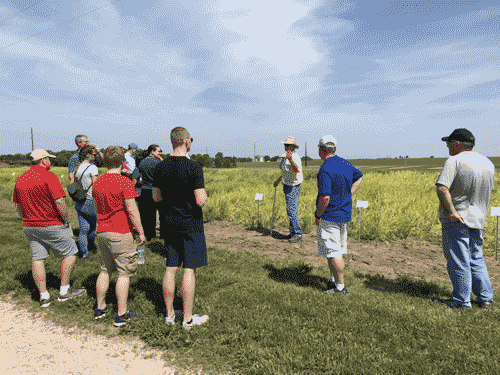
Dr. Phippen discusses fungicide trails.
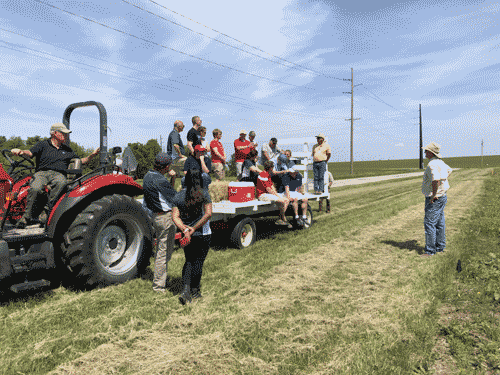
Dr. Alex Lindsey (Ohio State) discusses interseeding oilseed in corn stubble.
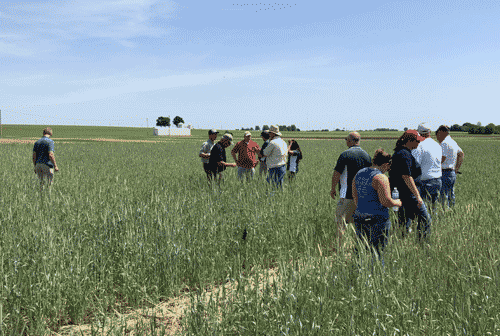
Attendees examine penycress carryover in rye cover crop following corn.
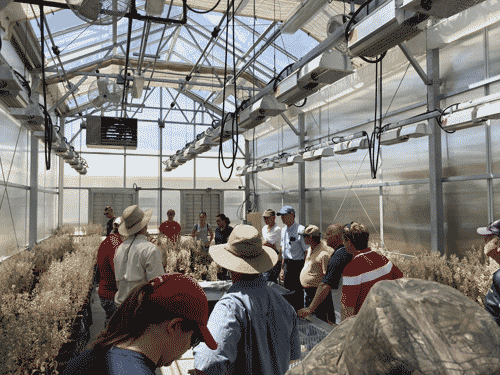
Dr. Phippen discusses ALS resistance in pennycress and ISU breeding crosses .
8th Annual Pennycress Field Day
May 18, 2017 Field Tour
A gorgeous day for a plot tour. The spring pennycress lines are well into the dry down phase of maturity, while the winter lines are still a week or so behind. Everything should be harvested by the end of May. The plots looked great. This year's tour was well attended by producers, industry, USDA and University researchers, and students.

Pennycress research plots
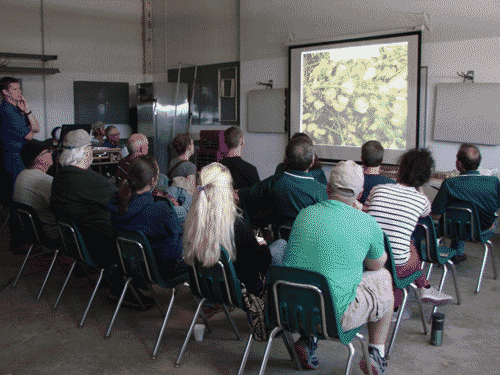
Dr. Phippen gives a brief overview of results from past pennycress research projects on variety trails and fungicide treatments.
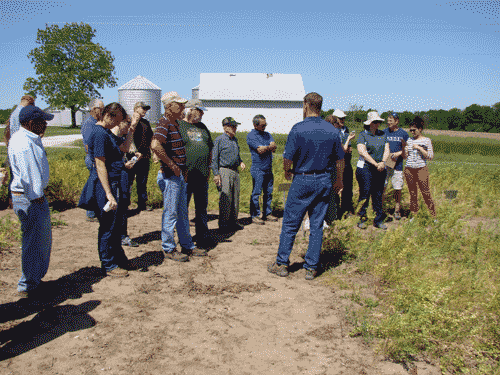
Dr. Phippen demonstrating impact of population density study.
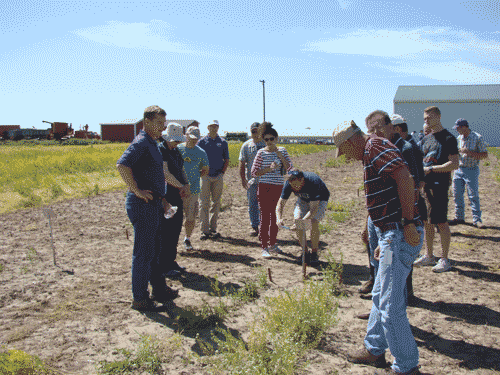
Dr. Phippen dicusses WIU breeding program on Winter and Spring type pennycress
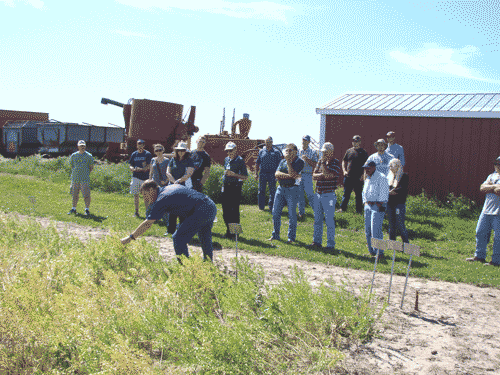
Dr. Phippen identifies critical traits in breeding program

Tractor ride to new WIU greenhouses.

Dr. Phippen shows EMS mutant penncyress plants with unique characteristics.
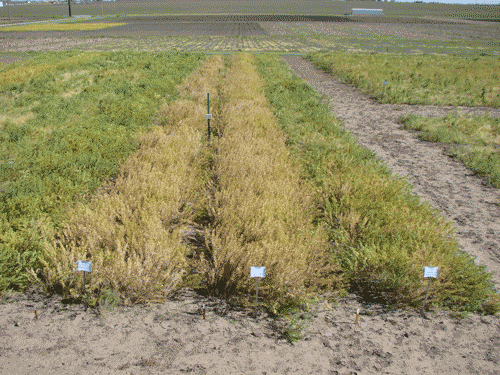
Bulk seed increases of spring pennycress lines

Spring type variety trails

Dr. Phippen discusses fungicide trails.

Dr. Phippen shows extra large seed pod mutant lines with attendees.
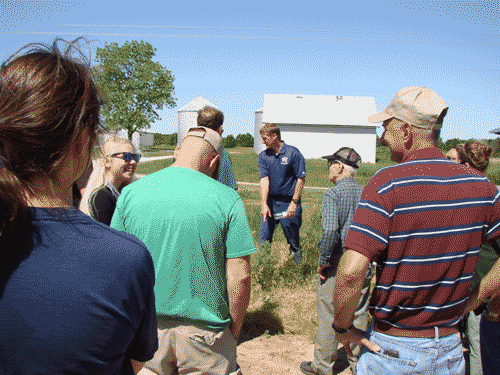
Attendees examine potential disease symptoms in pennycress.

Dr. Phippen discusses current ISU breeding program on pennycress.

Dr. Phippen discusses ALS resistance in pennycress.
7th Annual Pennycress Field Day
May 12, 2016 Field Tour
Another perfect day for a plot tour. With the mild winter, the pennycress was 10-days ahead of scehdule and was entering the dry down phase of maturity. The plots looked great. This years tour was well attended by producers, industry, USDA and University researchers,and students.
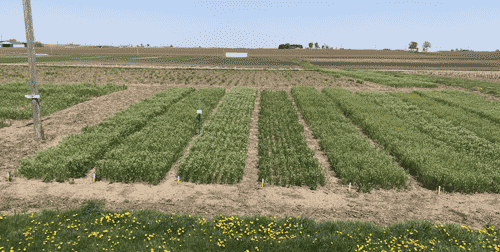
Pennycress research plots

Dr. Phippen gives a brief overview of results from past pennycress research projects on variety trails and fungicide treatments.

Dr. Phippen demonstrating impact of population density study.

Dr. Phippen dicusses WIU breeding program on Winter and Spring type pennycress

Dr. Phippen identifies critical traits in breeding program

Tractor ride to pennycress breeding plots.
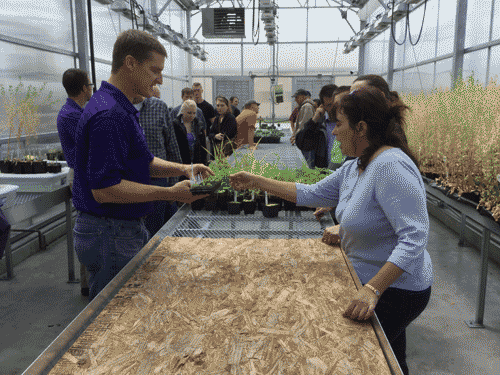
Dr. Phippen explains the propogation methods used in growing pennycress in the new WIU research greenhouse facility.

Fungicide evaulation plots using Priaxor.

Dr. Phippen explains pennycress planting and plot layouts.

Dr. Phippen discusses varying traits in wild populations of pennycress.
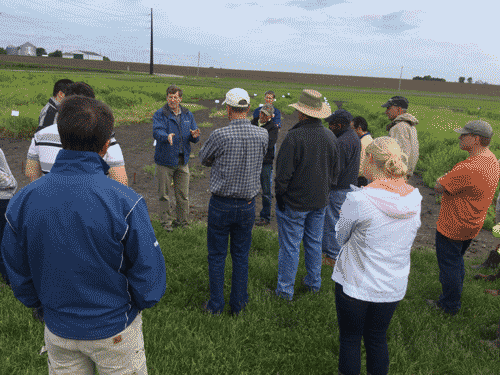
Dr. John Sedbrook from ISU dicusses Mutant breeding program.
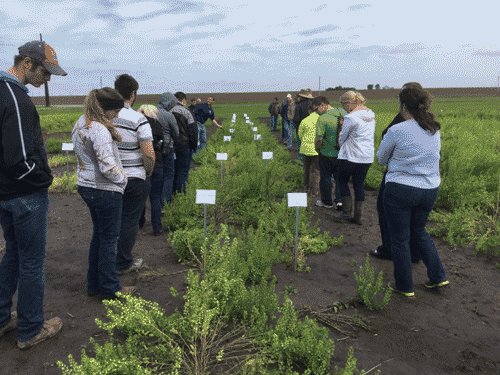
Attendees examine breeding crosses.

Dr. Phippen discusses current breeding program on pennycress in new greenhouse facility.

6th Annual Pennycress Field Day
May 28, 2015 Field Tour
Perfect weather for a field day. The pennycress was right on schedule entering the dry down phase of maturity. The plots looked great. This years tour was well attended by producers, industry, USDA and University researchers,and students from 4 different states.
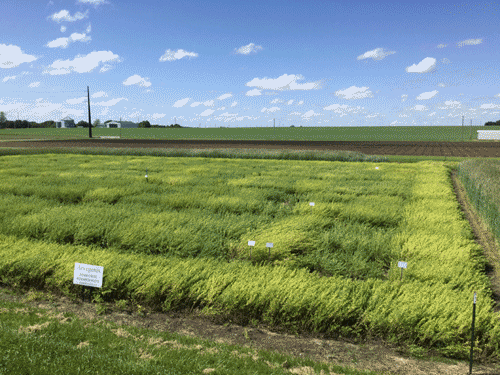
Arvengenix research plots, winter pennycress lines varying in maturity time.
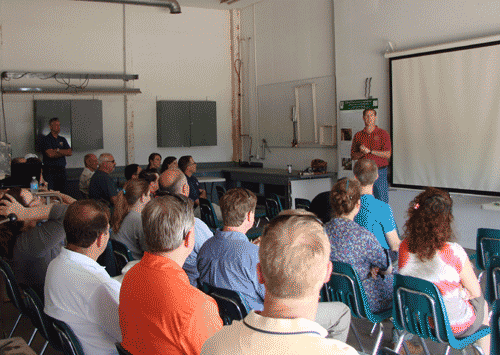
Dr. Phippen gives a brief overview of results from past pennycress research projects on crop rotation studies and the current studies looking at the environmental impact of pennycress production.
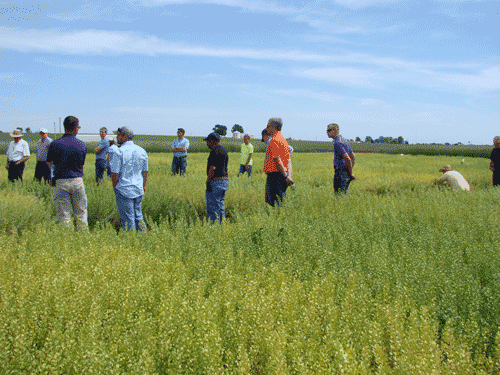
Students and researchers examing pennycress plots.
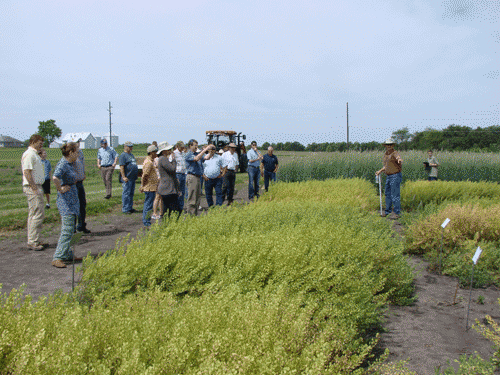
Dr. Phippen discusses varying traits in wild populations of pennycress.

Tractor ride in front of research conducted by Arvengenix LLC to advance pennycress breeding.

Dr. Phippen explains the evaluations of USDA pennycress lines in new WIU research greenhouse facility.

Evaulation plots of wild collected pennycress populations.
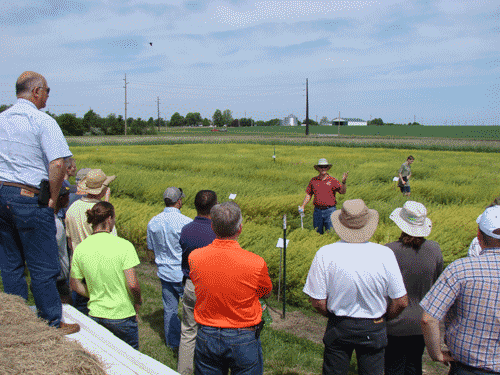
Dr. Phippen explains pennycress planting and plot layouts.

Arvegenix researchers give updates on research and bulk production of pennycress.
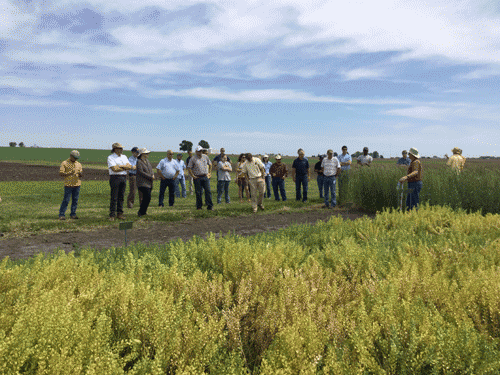
Evaulation plots of varying planty densities.
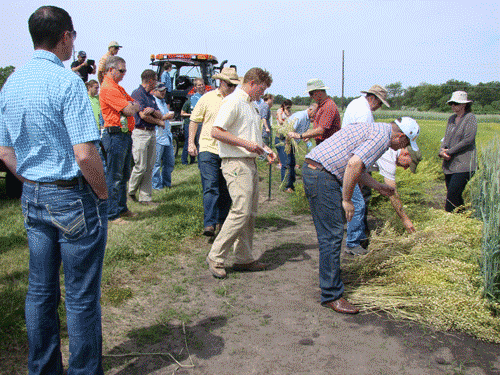
Attendees examine harvested pennycress for disease symptoms.
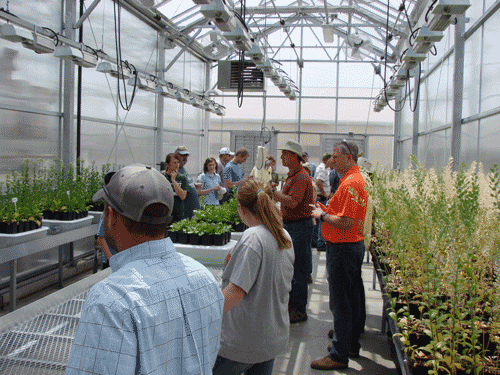
Dr. Phippen discusses current breeding program on pennycress.
5th Annual Pennycress Field Day
May 29, 2014 Field Tour
Finally, a beautiful day in Illinois. Although the pennycress was slightly behind schedule for maturity, the plots looked great. This years tour was attend by producers, industry, USDA and University researchers,and students.

Spring pennycress lines varying in maturity time.

Dr. Phippen gives a brief overview of results from past pennycress research projects on crop rotation studies and the current studies looking at the environmental impact of pennycress production.

Students and researchers examing bulk pennycress plots.
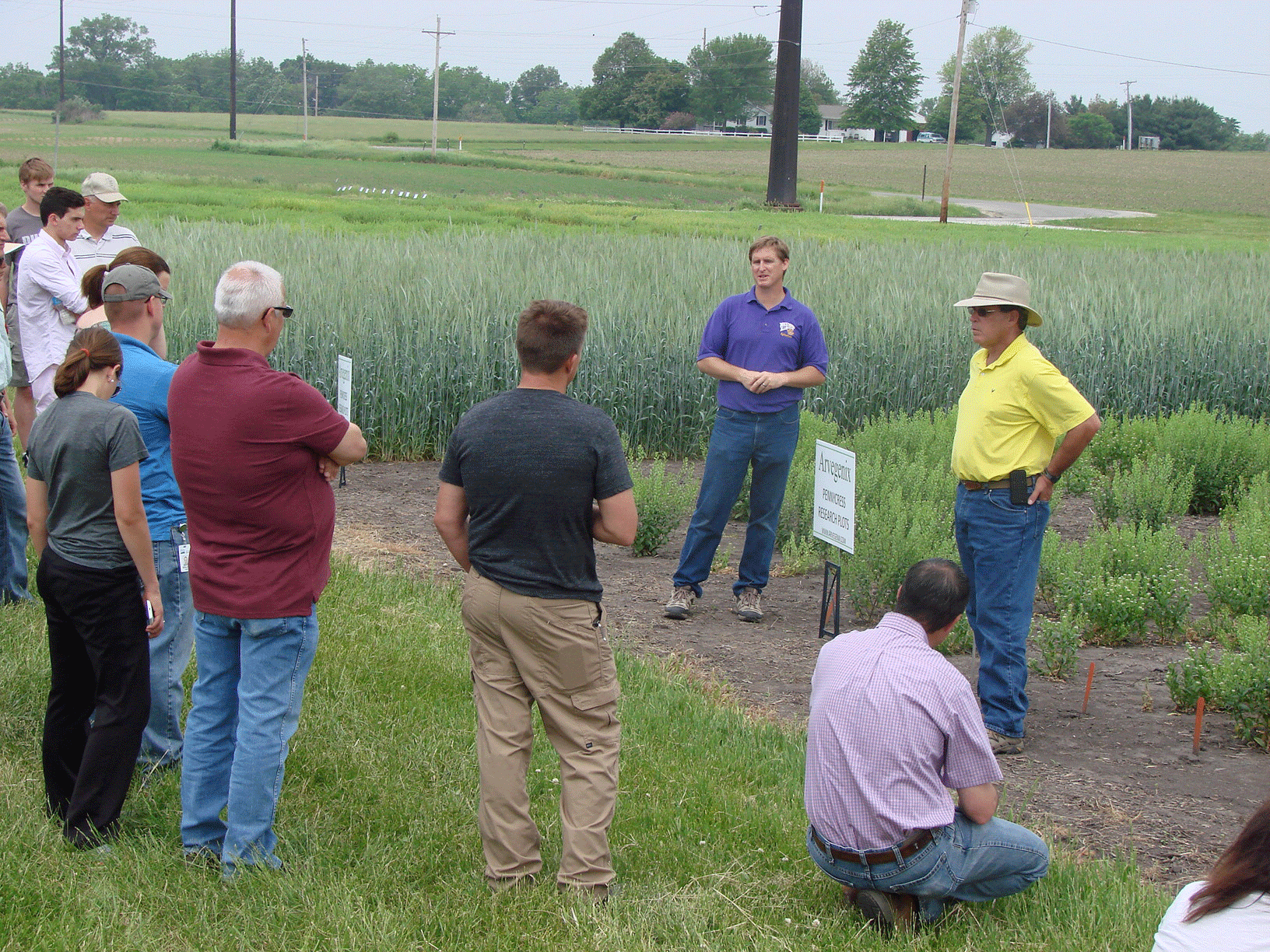
Dr. Phippen and Dr. Dennis Plummer (Arvengenix Researcher) discuss pennycress plots.

Dr. Plummer discusses current research conducted by Arvengenix LLC to advance pennycress breeding.
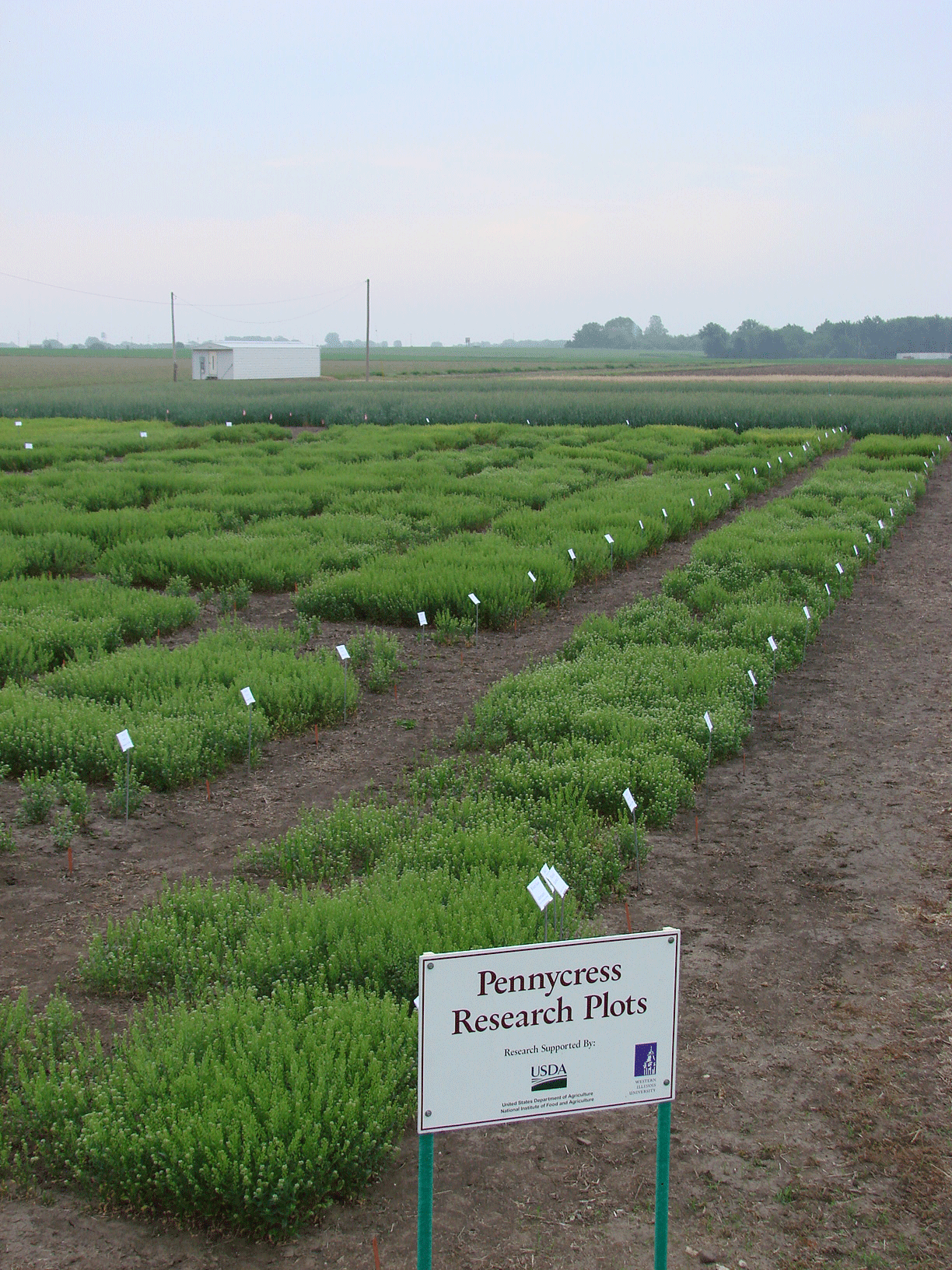
Evaulation plots of wild collected pennycress populations from southern Midwest and Great Lakes region.
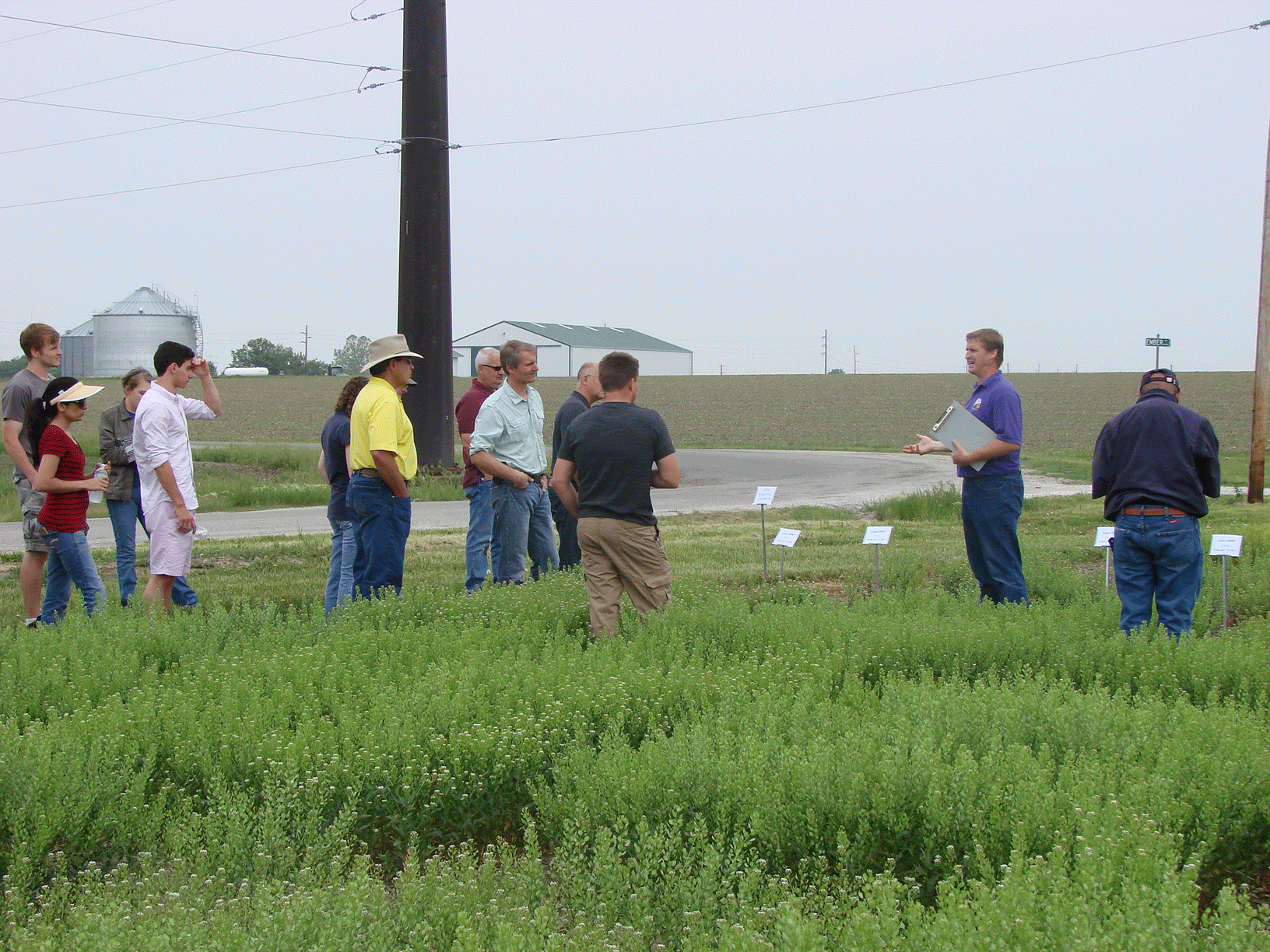
Dr. Phippen explains heat stress symptoms on USDA pennycress lines.
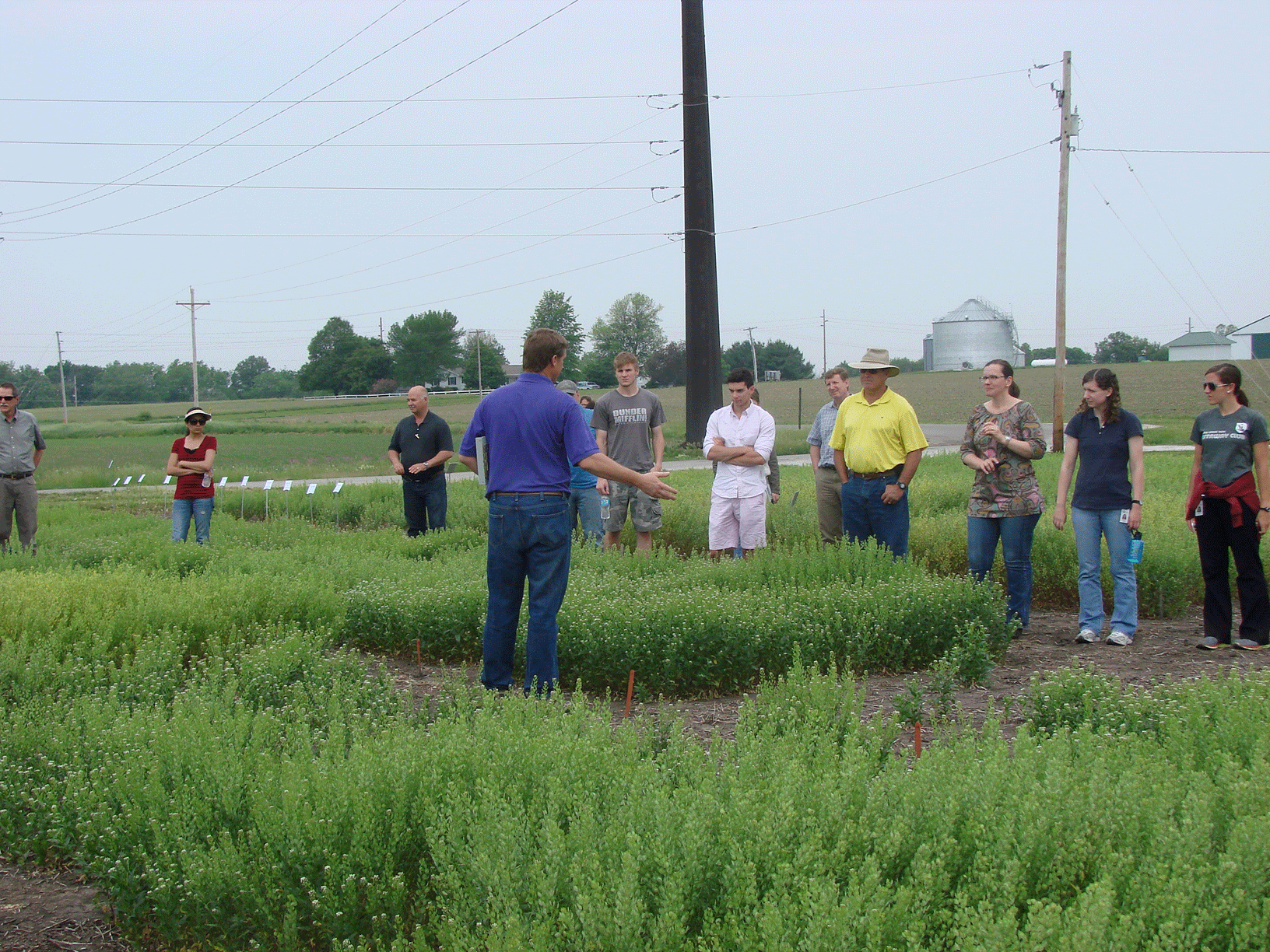
Dr. Phippen discusses variations seen in wild pennycress populations.
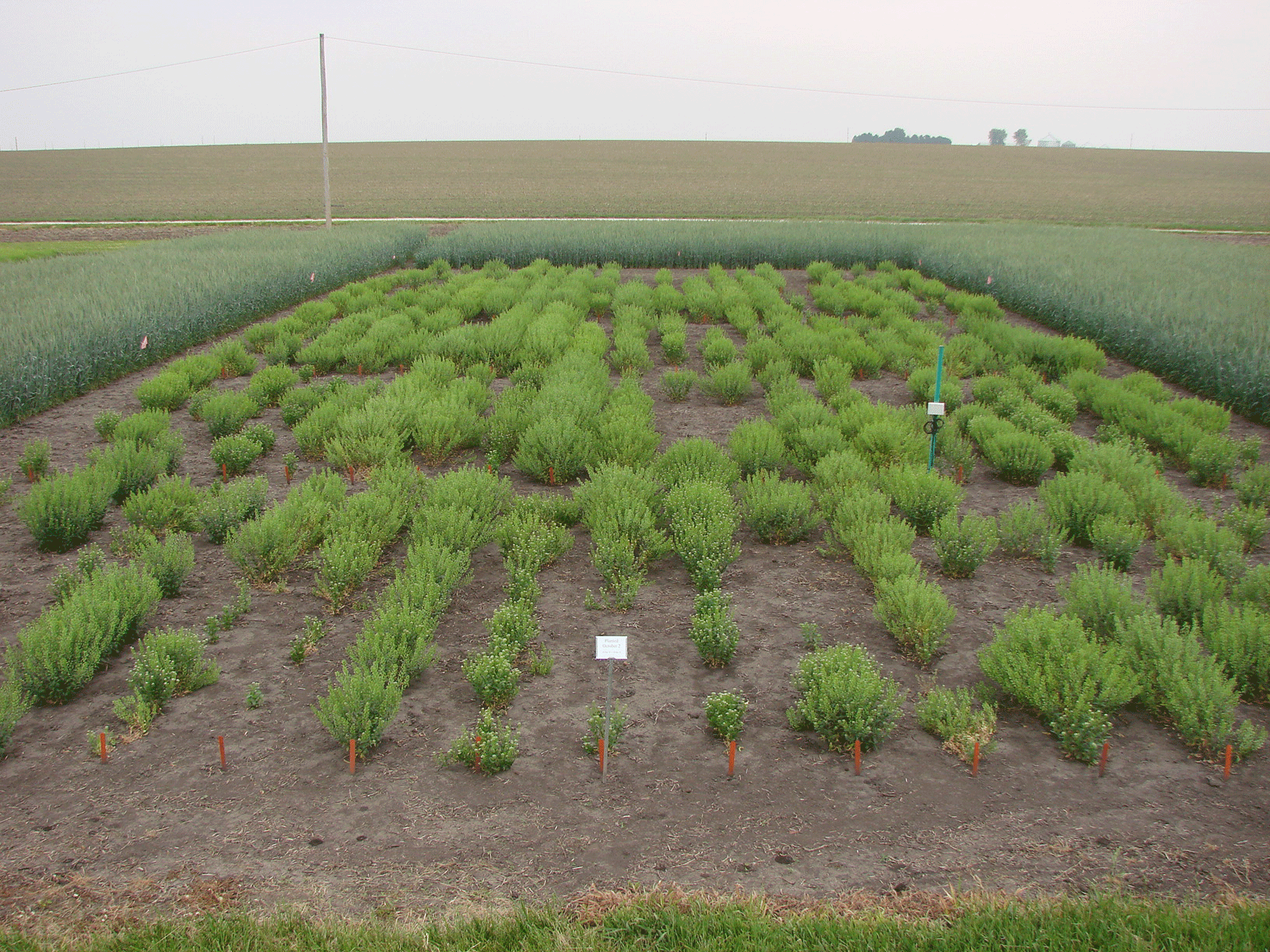
Evaulation plots of wild collected pennycress for Arvegenix LLC.
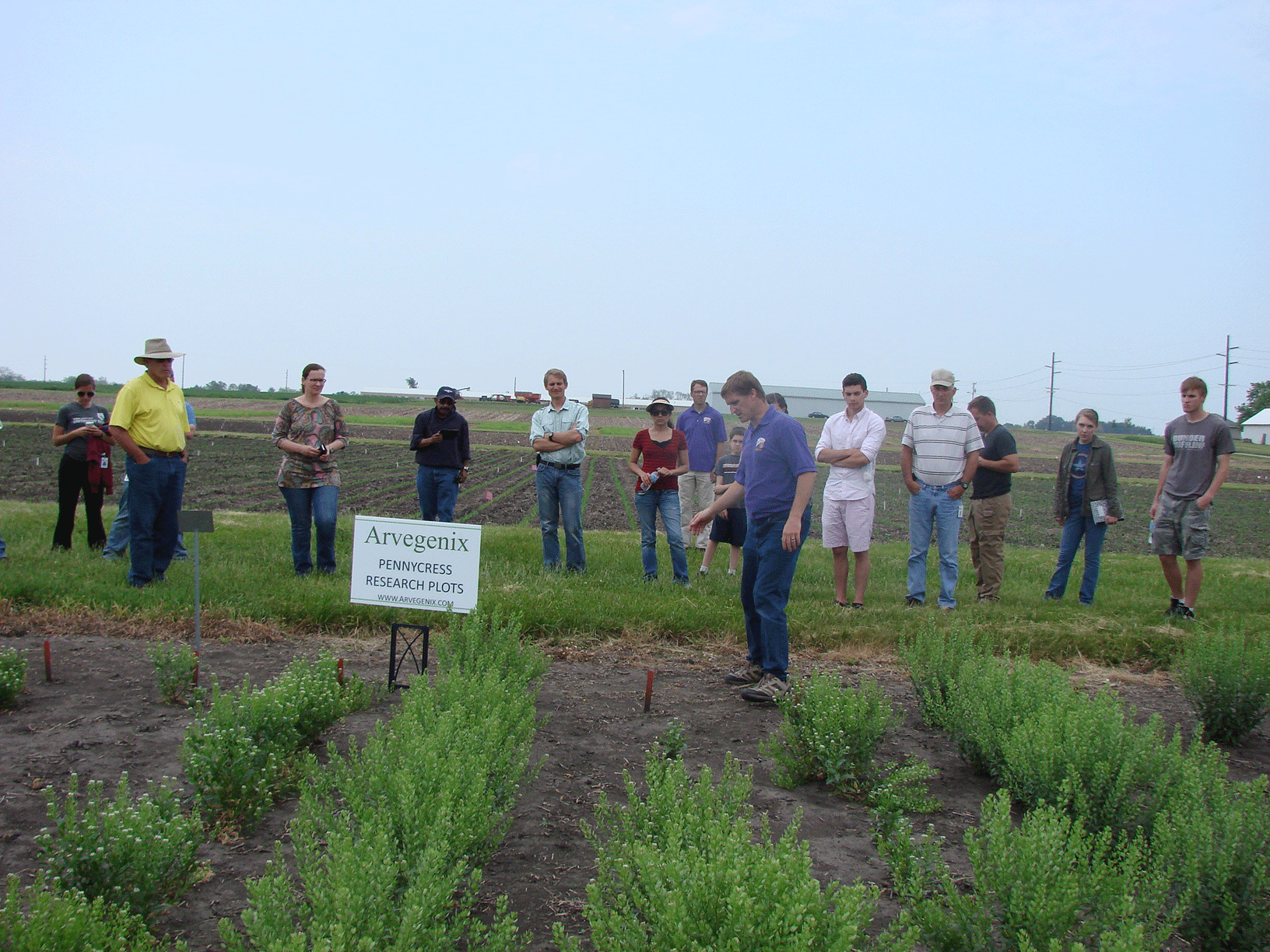
Dr. Phippen discusses current phenotypic variaition in wild pennycress and the need to identify traits for domestication.
4th Annual Pennycress Field Day
June 6, 2013 Field Tour
Yet another overcast damp day in Illinois. With the unseasonably wet and cool weather this spring, the field day was 4 weeks later than last year. This years tour was well attend by producers, industry, USDA and University researchers,and students.

Dr. Phippen gives a brief overview on the spring pennycress planting and introduces new penycress lines from Canada and Chile.
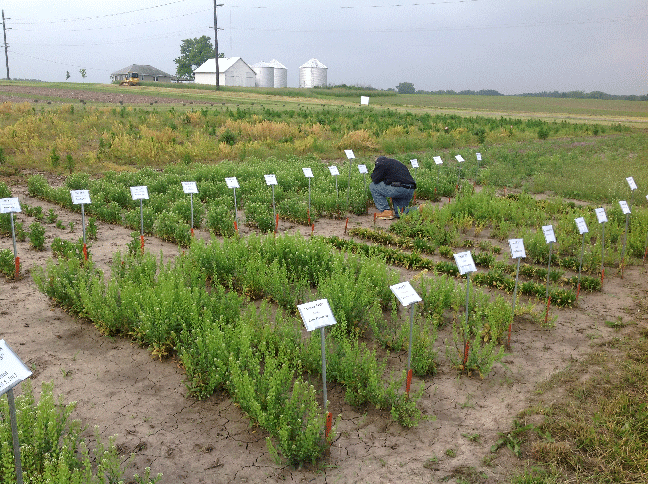
Producer looking over advanced breeding lines of spring pennycress.

A producer looking over pennycress variety trials.

Mature pennycress seed pods.
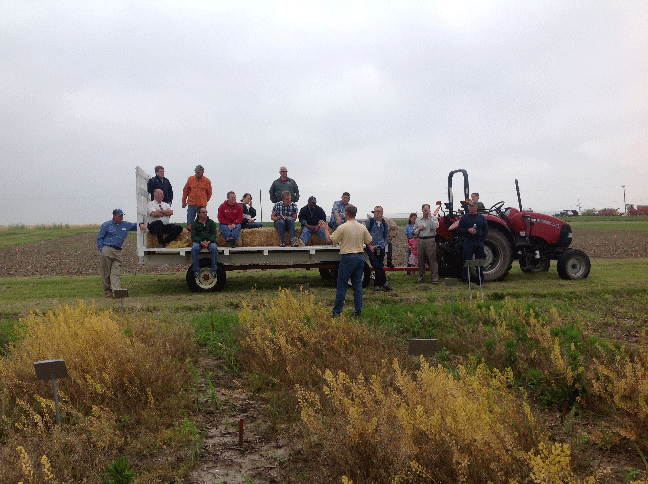
Dr. Phippen explains nitrogen application on pennycress in Illinois.
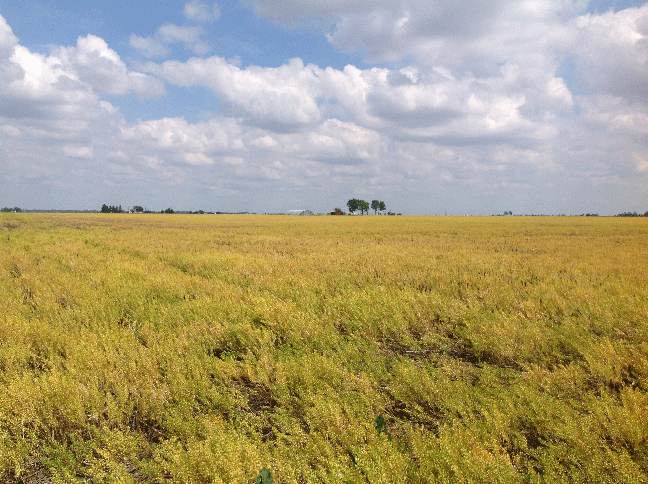
Producer shares photo of his 150 acre pennycress field that is almost ready to harvest in Illinois.
3rd Annual Pennycress Field Day
May 3, 2012 Field Tour
Finally, we had wonderful weather for the plot tours. With the unseasonably warm weather this spring, the field day was 4 weeks earlier than last year. This years tour was well attend by 35+ producers, industry, USDA and University researchers,and students.
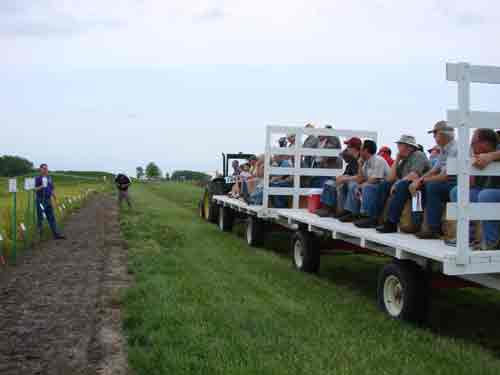
Dr. Phippen gives a brief overview on pennycress production and introduces the variety trials

Producers have a chance to look over the 62 entries in the variety trials.
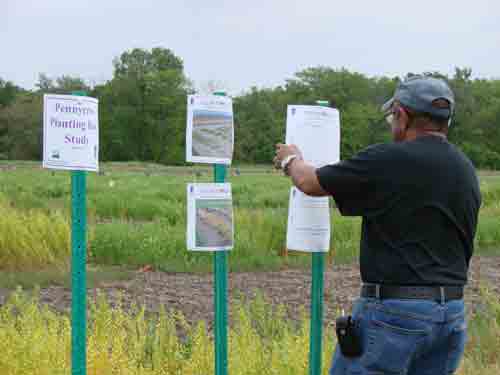
A producer looking over recent data collected on planting dates in Illinois and the impact on total oil accumulation in seed.
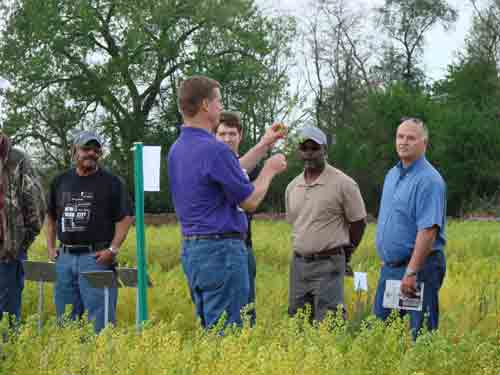
Dr. Phippen explains symptoms of heat stress from very warm weather in March.
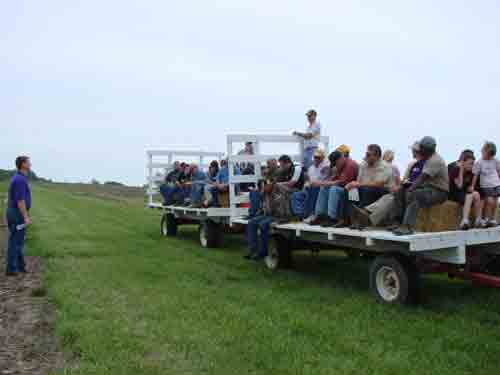
Guest speaker and USDA researcher, Dr. Terry Isbell gives an update on pennycress product development in fuels and other industrial applications.

Mature pennycress seed pods.
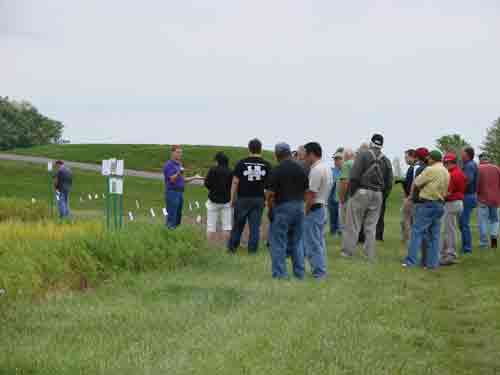
Dr. Phippen explains September to Mid-October looks to be the best time to plant pennycress in Illinois.
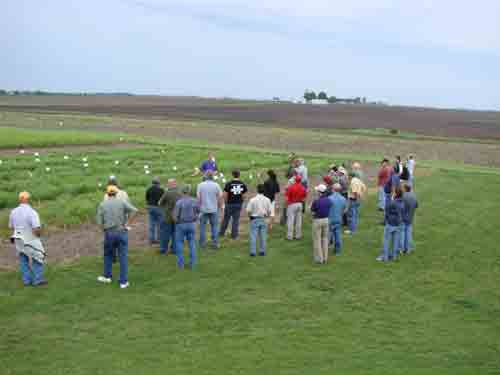
Dr. Phippen discusses fall nitrogen applications and the effects across three different varieties.

Guest speaker and producer, Brad Glenn, gives an update on the large scale production of pennycress in Illinois.

Overview of the 2012 pennycress research plots at Western Illinois University.
2nd Annual Pennycress Field Day
June 2, 2011 Field Tour
Yet another wet and rainy field day. However, this did not stop producers, industry, USDA and University researchers,and students from attending.
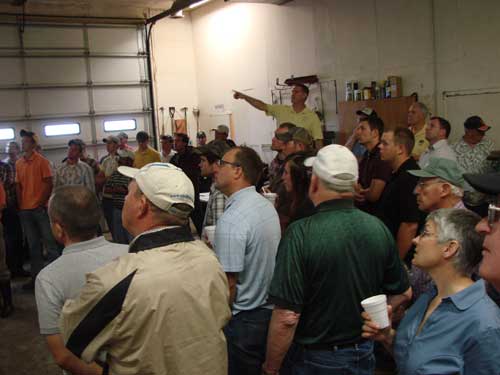
Dr. Phippen gives a brief overview on pennycress production in the agronomy building while the rain lets up.
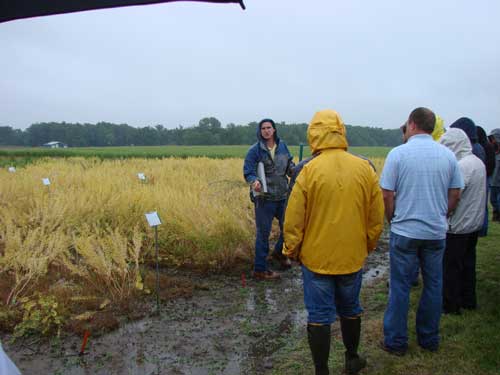
Dr. Phippen explains fall nitrogen application and potential weed issues.

Attendees enjoy the brief hay rack ride and run for cover to hear more about pennycress planting dates and nitrogen application.
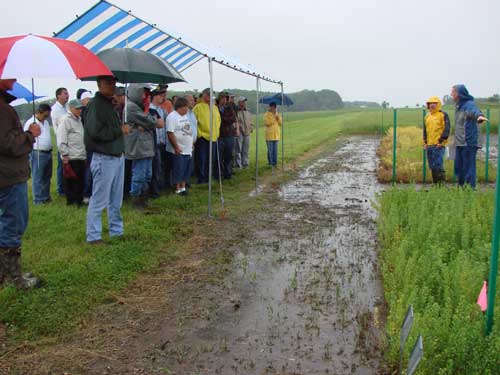
Post Doctorate Harry Rukavina explains spring applied nitrogen study.
1st Innaugural Pennycress Field Day
May 20, 2010 Field Tour
Cold, windy, and heavy rain
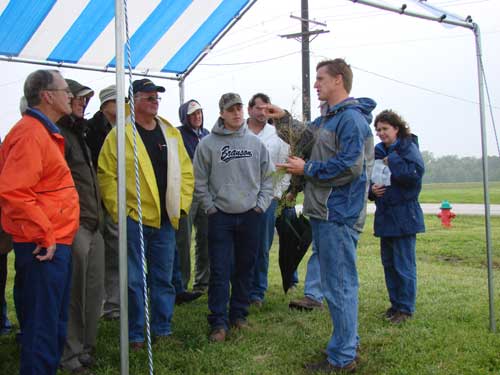
Dr. Phippen explaining pennycress planting

Dr. Phippen and students, Lance Coers and Katie Roskamp, layoout plot signs

Tent tries to keep producers dry
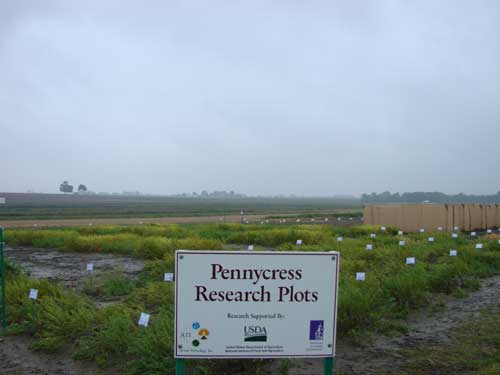
Rainy field plots

Connect with CBT: